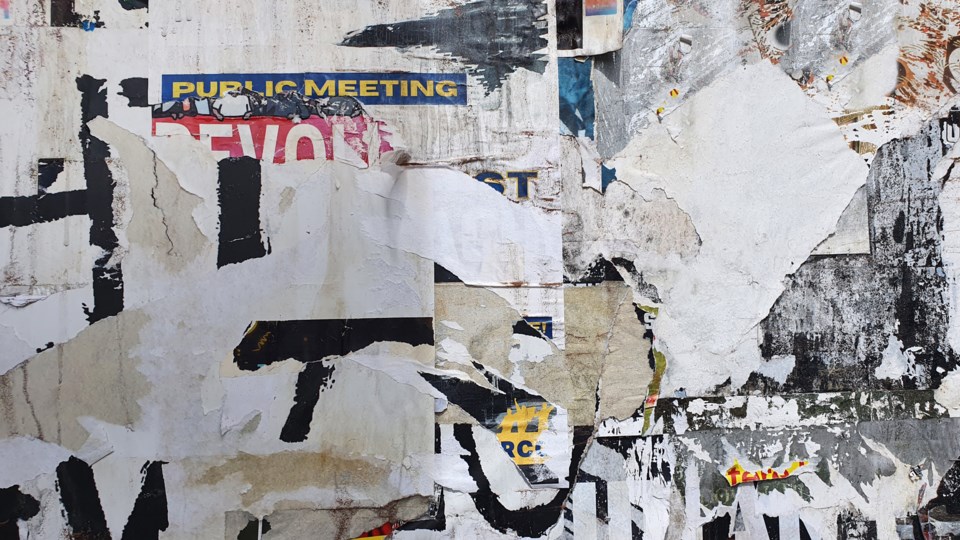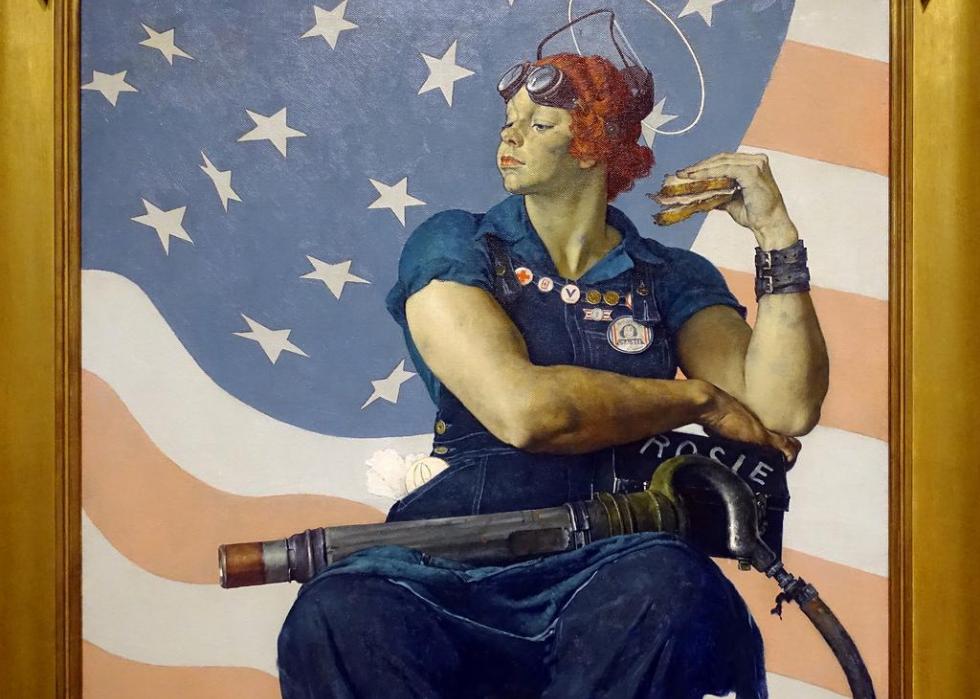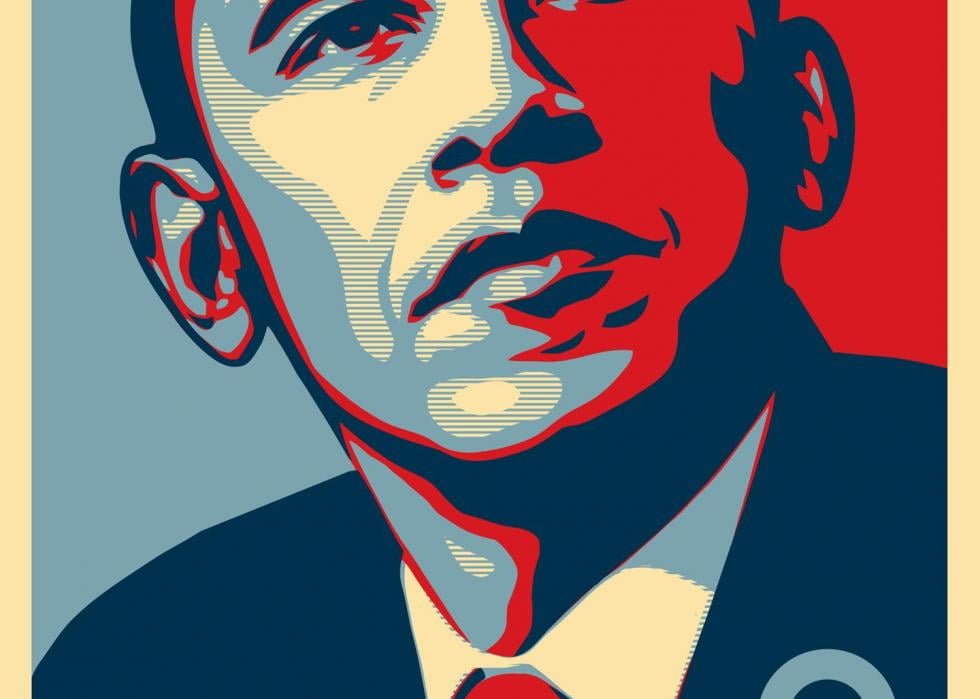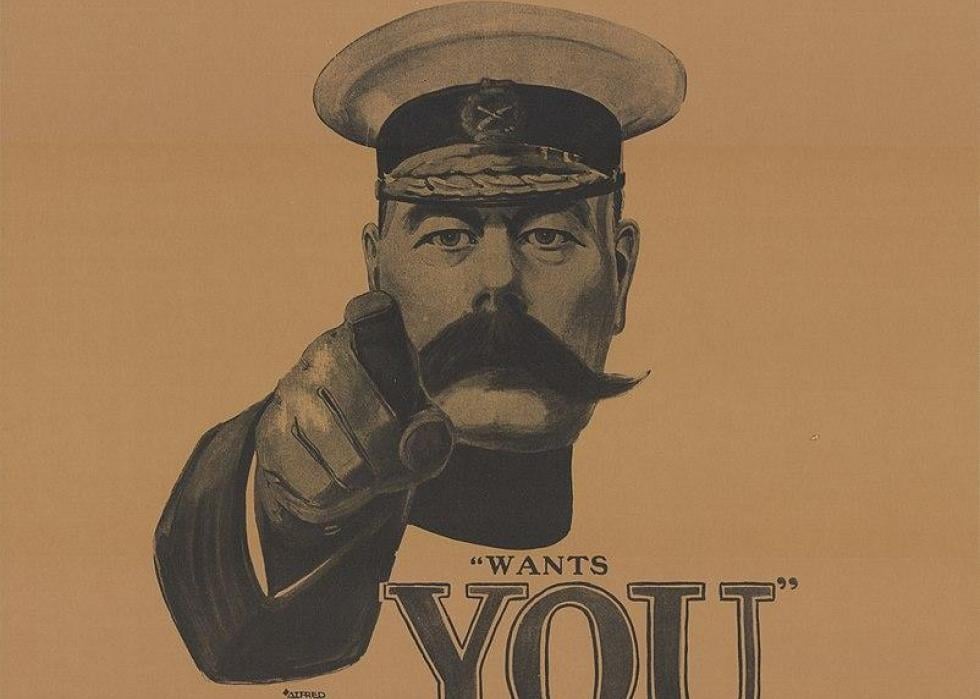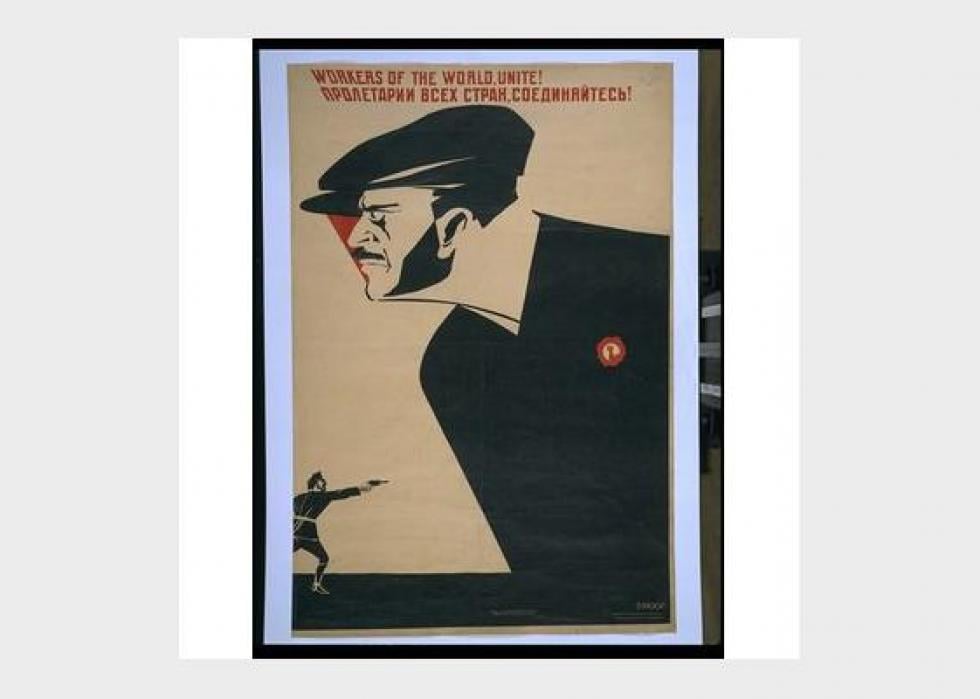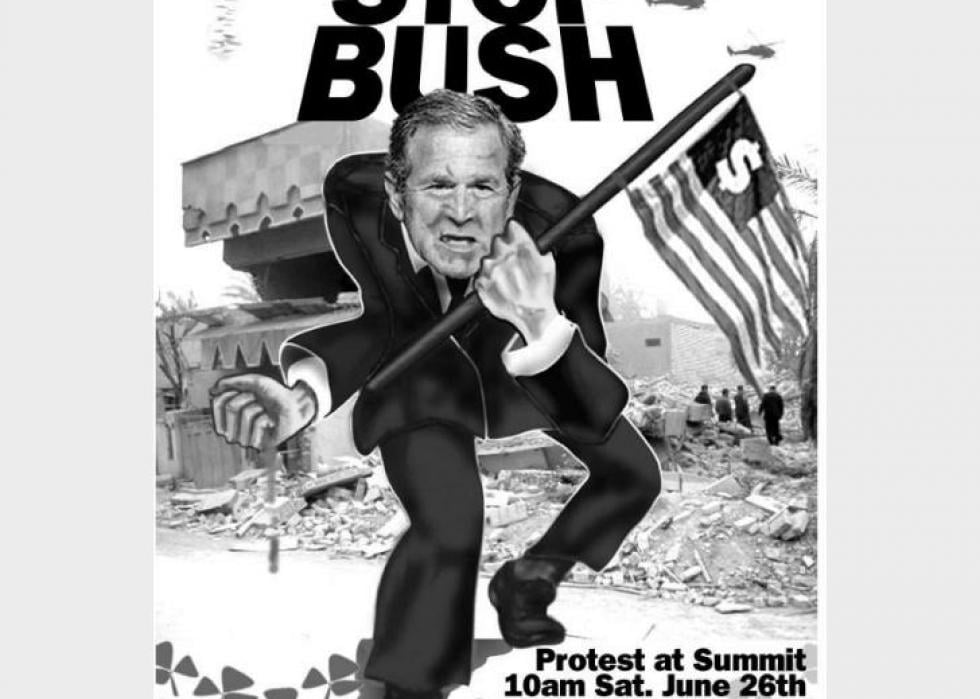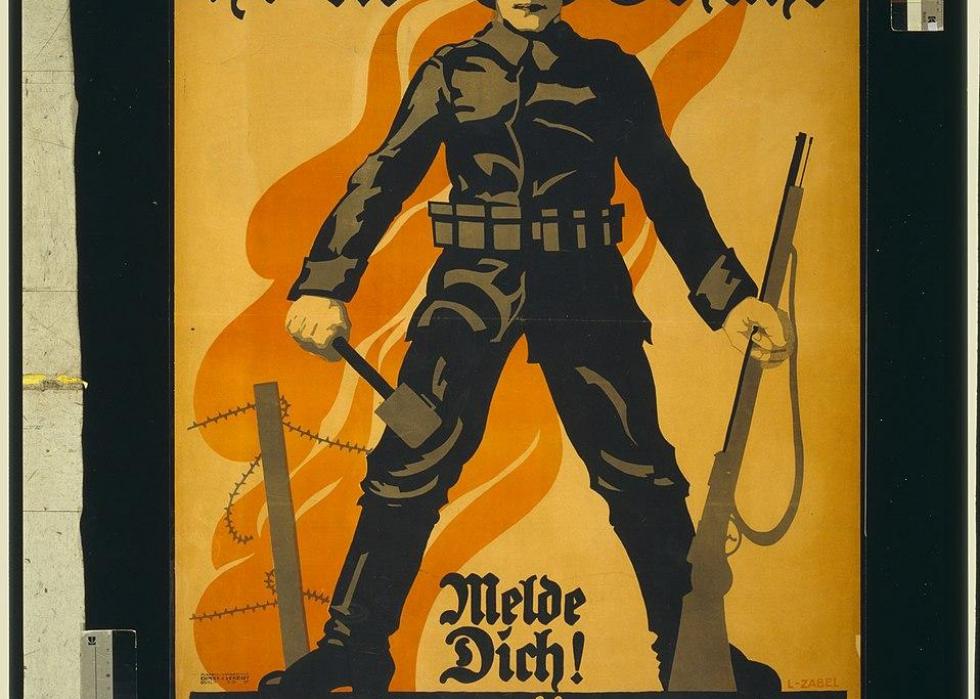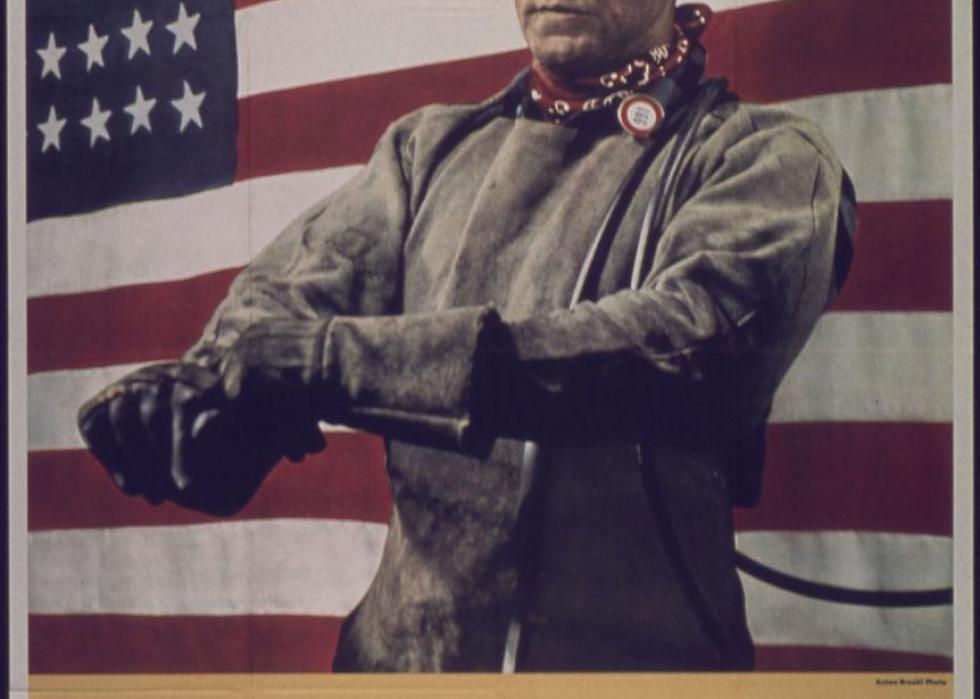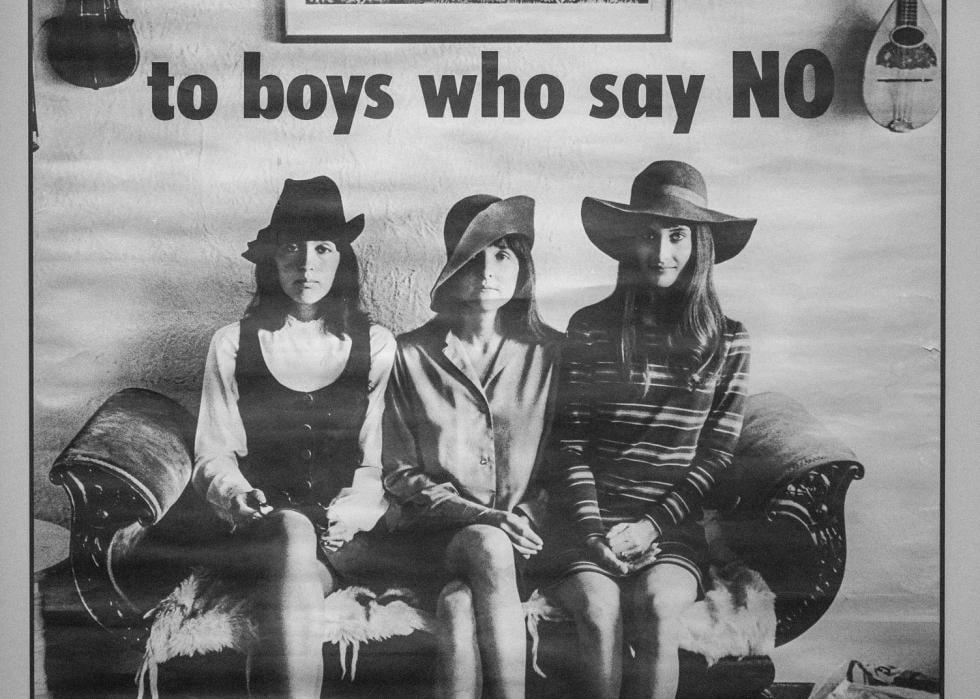Propaganda is defined as thoughts, ideas, or facts that are disseminated in order to further a cause or movement—or hinder an opposing one. The history of propaganda is rich, dating all the way back to the 15th century. However, it didn’t become mainstream, at least in the U.S., until 1914 at the start of World War I.
A couple of propaganda posters that have really stuck to the wall include the image of the woman commonly mistaken for Rosie the Riveter, which came out in the 40s but later took on a feminist connotation, and the iconic image of Che Guevara that has been associated with so many famous protests.
These posters have stood the test of time and remain woven into our society, some of them more than 100 years after their initial creation.
Stacker highlighted 50 famous propaganda posters associated with major wars and political movements throughout history, including those from different countries and time periods. Read on to see the origins of Uncle Sam, and where the phrase “loose lips sink ships” came from.
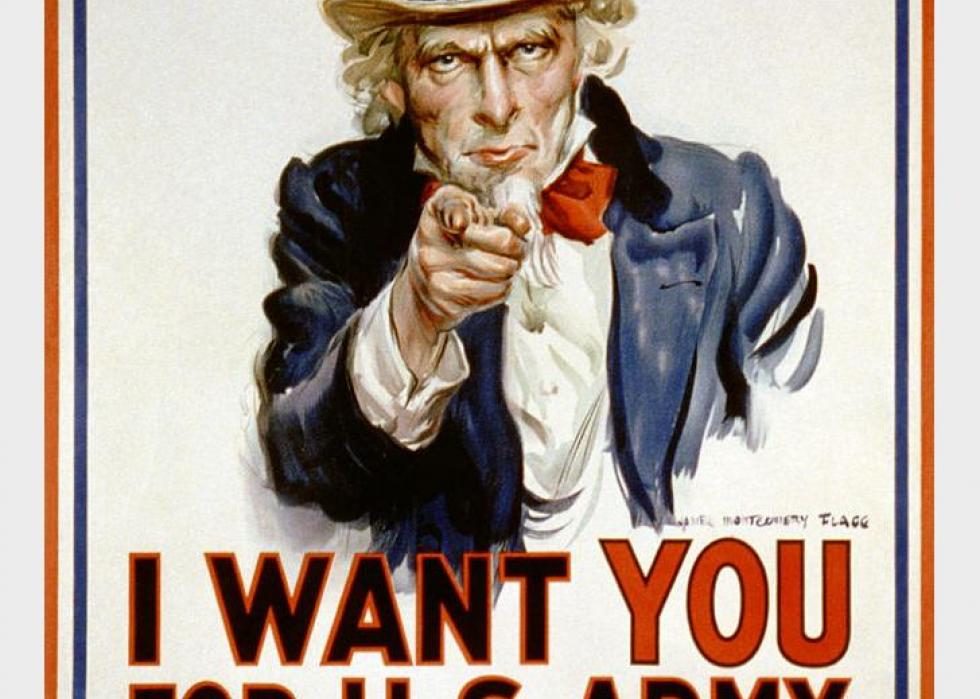
I Want You for US Army
This American poster is widely regarded as the most famous poster in the world, although it was inspired by a British poster bearing a similar slogan. It made its debut on the cover of the publication Leslie’s Weekly in 1916, depicting “Uncle Sam” urging Americans to enlist in the army as America entered World War I.
Rosie the Riveter
On the heels of a cultural phenomenon (including a popular song of the same name), Norman Rockwell created this image of “Rosie the Riveter” in 1943 to represent American women working in munitions factories during World War II.
Hope
This poster of former President Obama is largely associated with his 2008 election campaign, and also exists in different versions with words like “Change” and “Progress” beneath the same image.
It has been the subject of legal controversy when it was revealed that its creator, Shepard Fairey, was accused of usurping the image of Obama from a former Associated Press photographer. Nonetheless, the poster is entwined with Obama’s campaign message at the time.
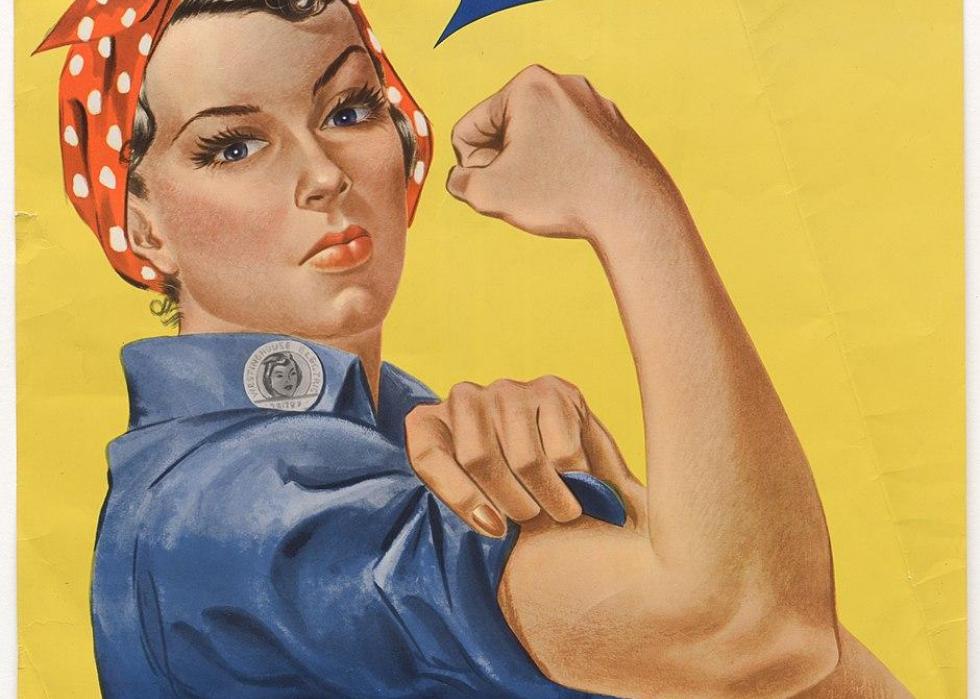
We Can Do It
This iconic poster from 1943—often confused with the original Rosie the Riveter—made quite a splash in the U.S., but not necessarily during World War II.
Though widely associated with the feminist movement, its original intention was to improve morale for the female employees of Westinghouse Electric. It resurfaced in the early '80s, at which point it gained popularity and acquired its woman-power connotation.
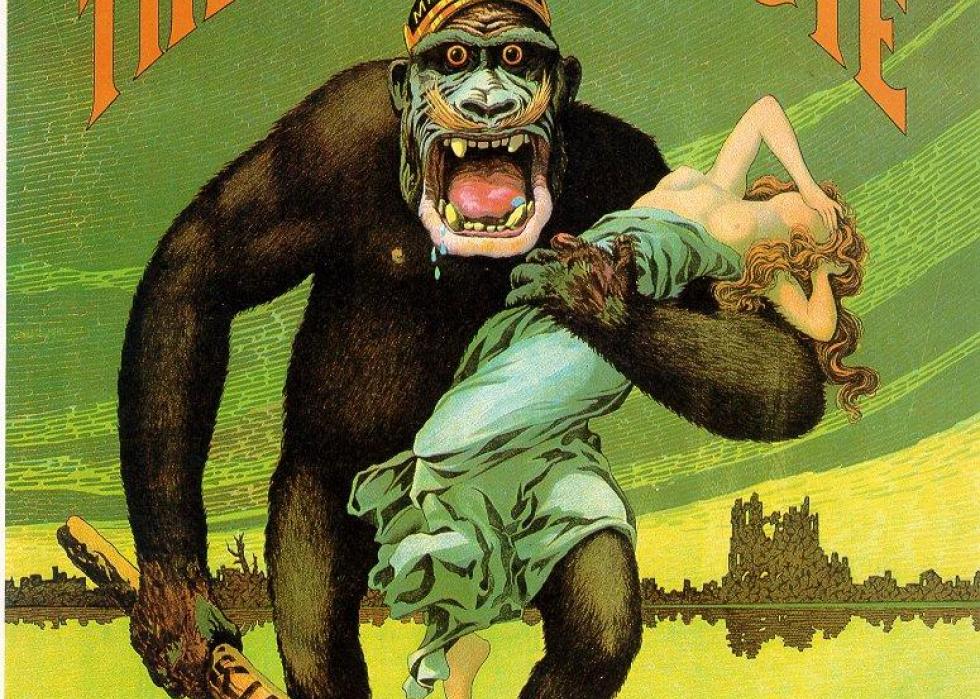
Destroy this Mad Brute, Enlist
Printed in 1918, this WWI-era image depicts German militarism embodied by a ferocious gorilla standing on the ground (labelled “America”) carrying a bloodied club as well as a young woman. The poster served as another call for American men to fight in the war.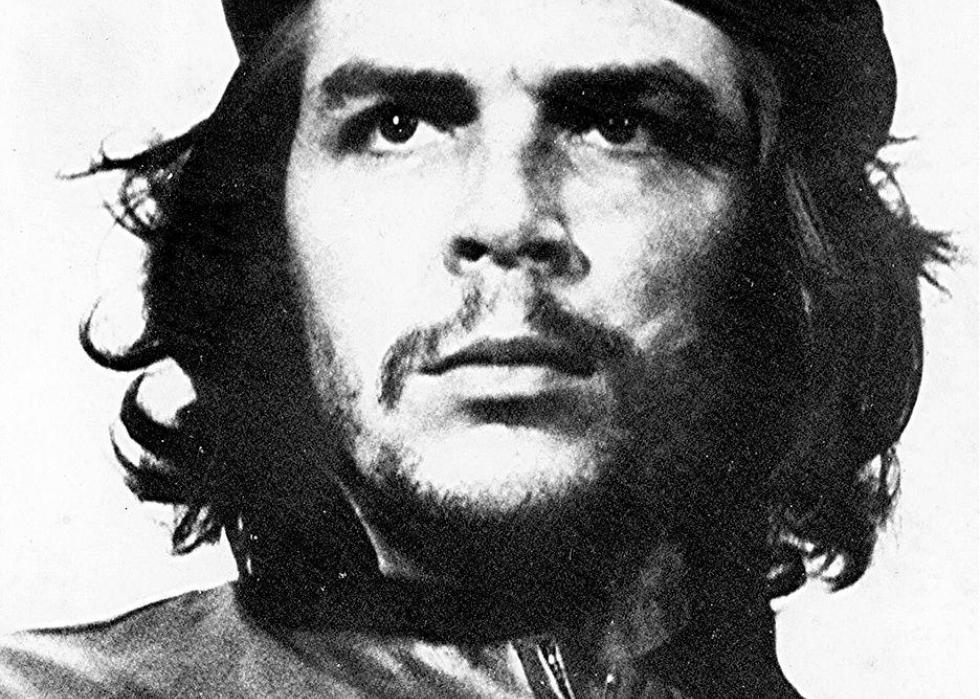
"Guerillero Heroico"
Alberto Korda took this iconic photo-turned poster of Argentine Marxist revolutionary Che Guevara in 1960. The image gained substantial cultural traction by the end of the '60s when Irish artist Jim Fitzpatrick used it to create a poster.
It first appeared in the U.S. in 1968 on New York City billboards and has come to symbolize rebellion on a large scale. The image title means “Heroic Guerilla Fighter.”
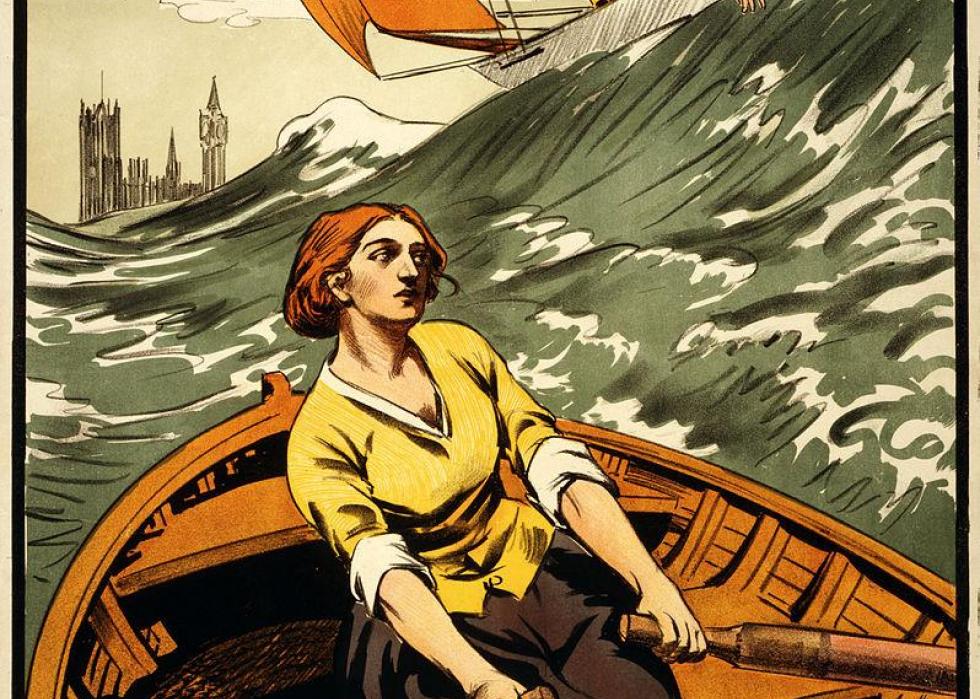
Handicapped
One of the most popular symbols of the British Suffragette Movement, this poster depicts a woman struggling to get by in a rowboat, while a man sails smoothly in his sailboat—symbolizing women’s struggle to achieve the right to vote.
Britons Wants You: Join Your Country's Army
This poster featuring British war minister Lord Kitchener—pointing for the sake of military recruitment—served as the inspiration for the American version, which reads “I want you for the U.S. Army.”
It was first printed for the cover of the London Opinion magazine in 1914, but came out as a poster shortly after. However, there isn’t much photographic evidence of it having been hung up in public.
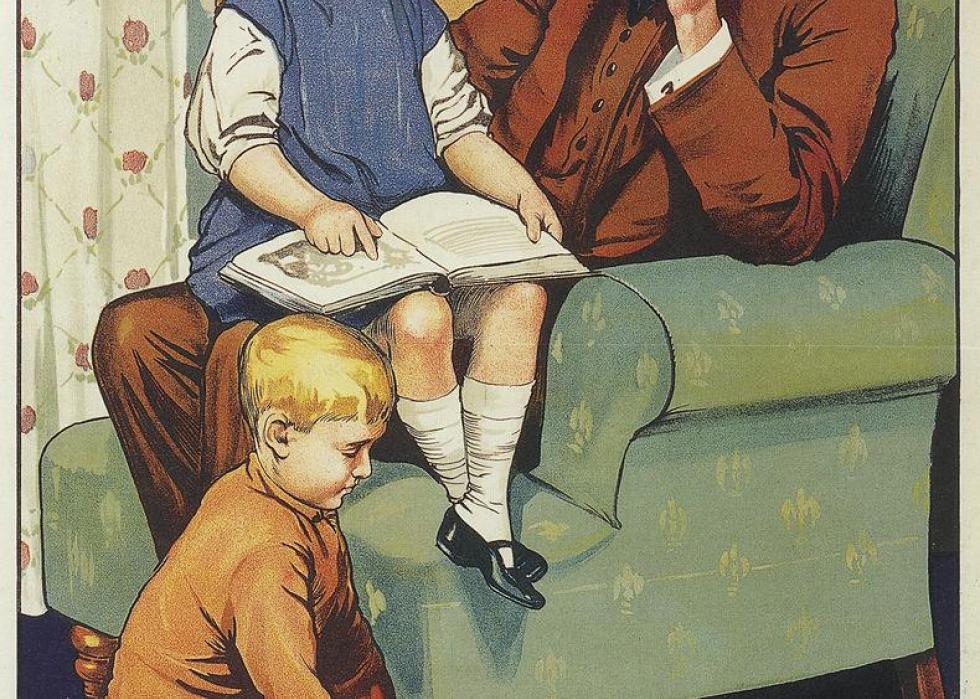
Daddy, What did You do in the Great War?
Britain’s army was relatively small at the start of WWI because there was no mandatory enlistment, so the Parliamentary Recruitment Committee was in charge of recruiting the general public to join the army. This was one of their more famous posters, created around 1914 to 1915.
The obligation for men to earn money to support their families dissuaded many of them from volunteering, but the PRC used that angle to suggest that children would think that their father’s duty in the army was a more noble calling.
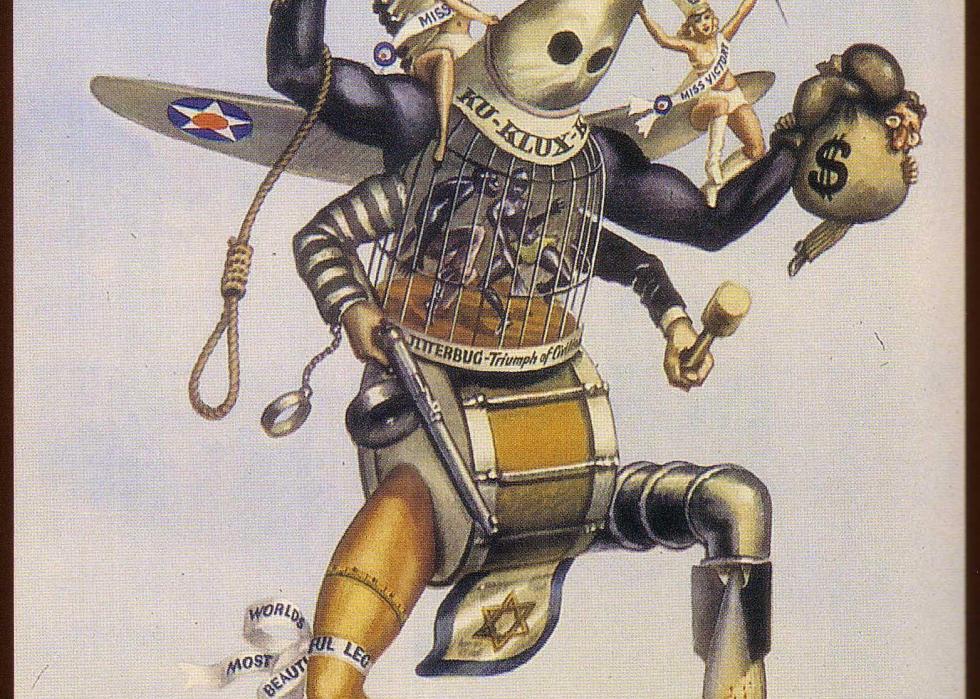
Kultur-Terror
It was not uncommon for Nazi propaganda posters to incorporate the likeness of the monster, which typically symbolized nationalities and philosophical beliefs that deviated from Nazi ideology.
This particular poster depicts a monster that represents different aspects of American culture as a whole through its different body parts—one arm holds a money bag, symbolizing greed, and a KKK hood on its head represents nationalism and extremism.

Keep Calm and Carry On
This now-ubiquitous poster originated as a slogan printed by the British government in 1939 to increase morale among the British people at the onset of WWII. It was one of three similar posters with the same design scheme and different wording, all of which incorporated the Tudor Crown.
Though it wasn’t necessarily popular in its time, it resurfaced about 15 years ago free of its previous connotation; its slogan was reproduced and parodied on posters, notebooks, and other commodities.
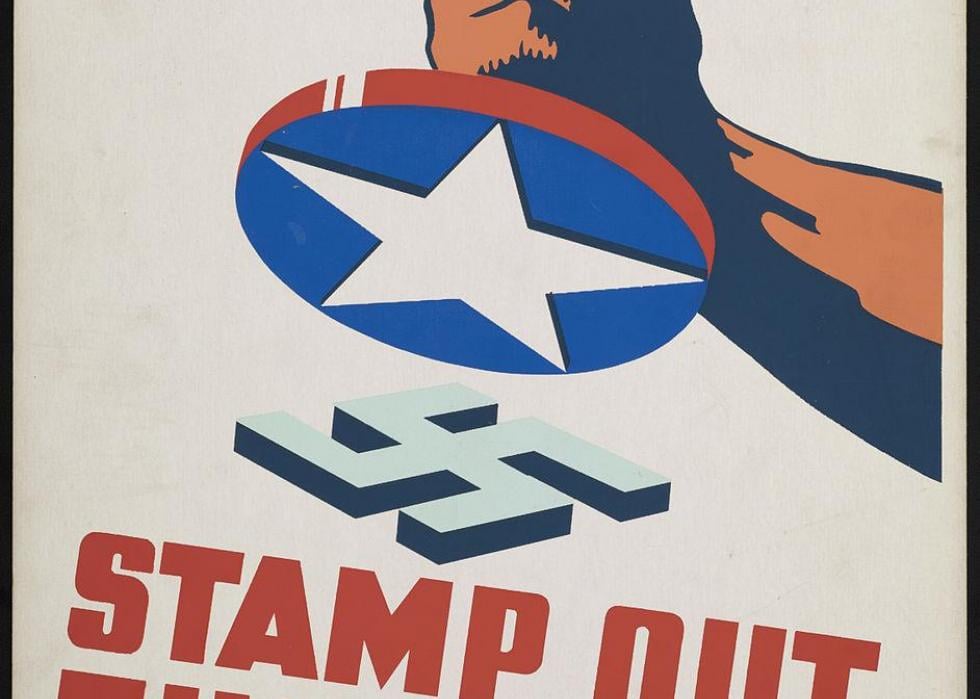
Stamp out the Axis
Dating to 1941, this image of a giant stamp hovering over a Nazi swastika quite literally conveys the U.S. military’s intention of wiping out the Germans in WWII.
Workers of the World Unite!
This Dimitri Moor poster from around 1920 calls for Russian workers to unite against imperialism, juxtaposing the enemy against the bold protagonist. Moor’s classic red and black palette pervades the poster.
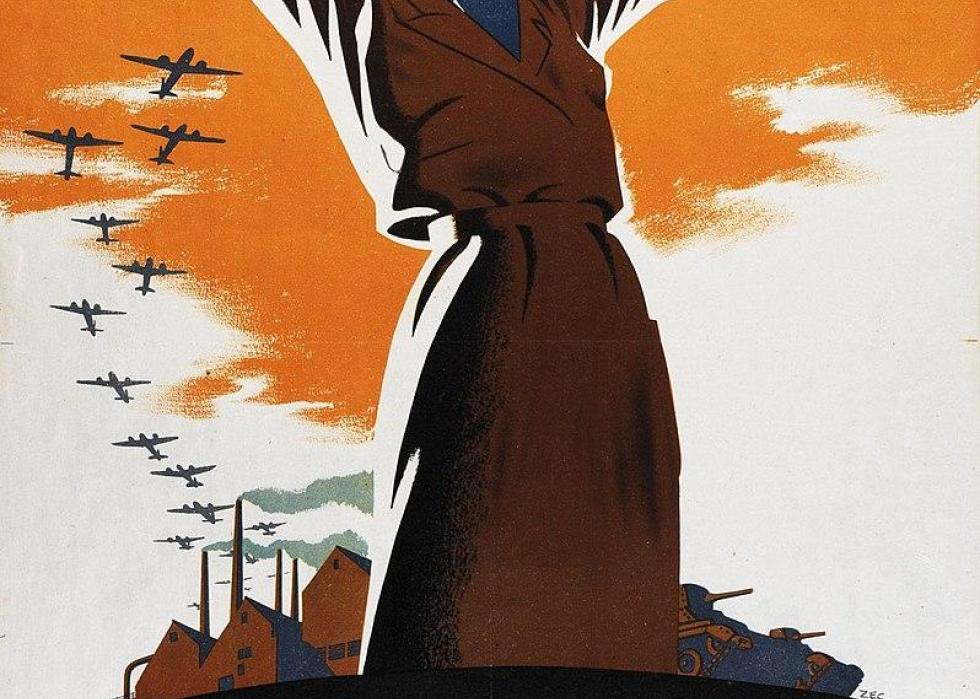
Women of Britain Come into the Factories
The U.K. saw many posters encouraging women to take on factory jobs during both World Wars. This 1941 poster calls for women to join the workforce during World War II, in consideration of the men serving in the army who had left their jobs available.
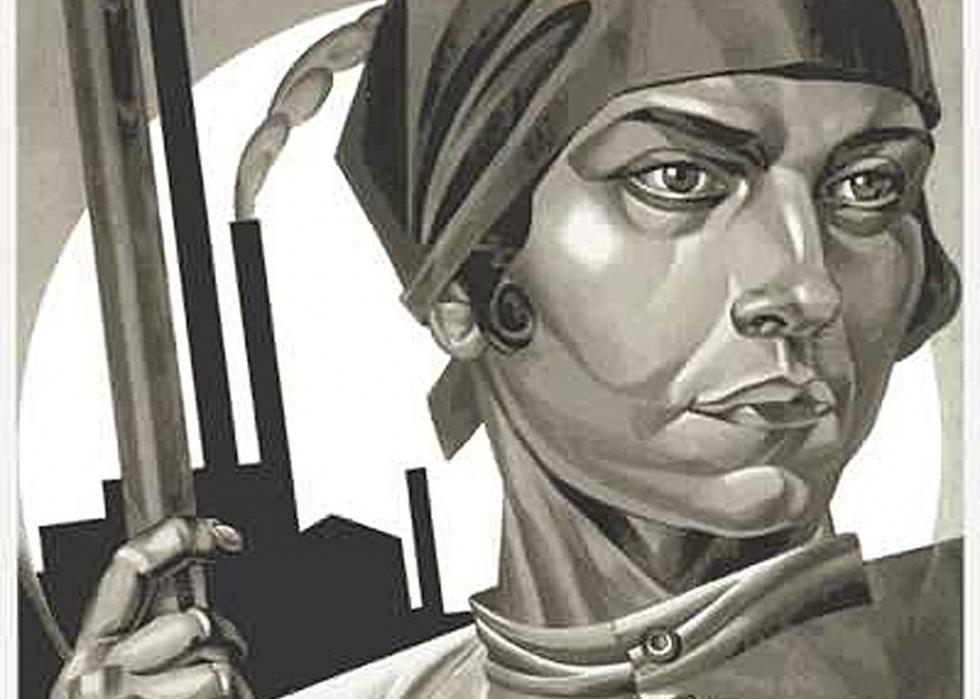
Emancipation of Russian Women
Women appeared prominently on Soviet socialist posters in the early 20th century. Promoting women’s liberation through the lense of socialism, this 1926 poster reads “Emancipated woman—build up socialism.”
These words imply that communism cannot thrive without equality among men and women—the woman’s masculinized appearance further symbolizes gender equality.
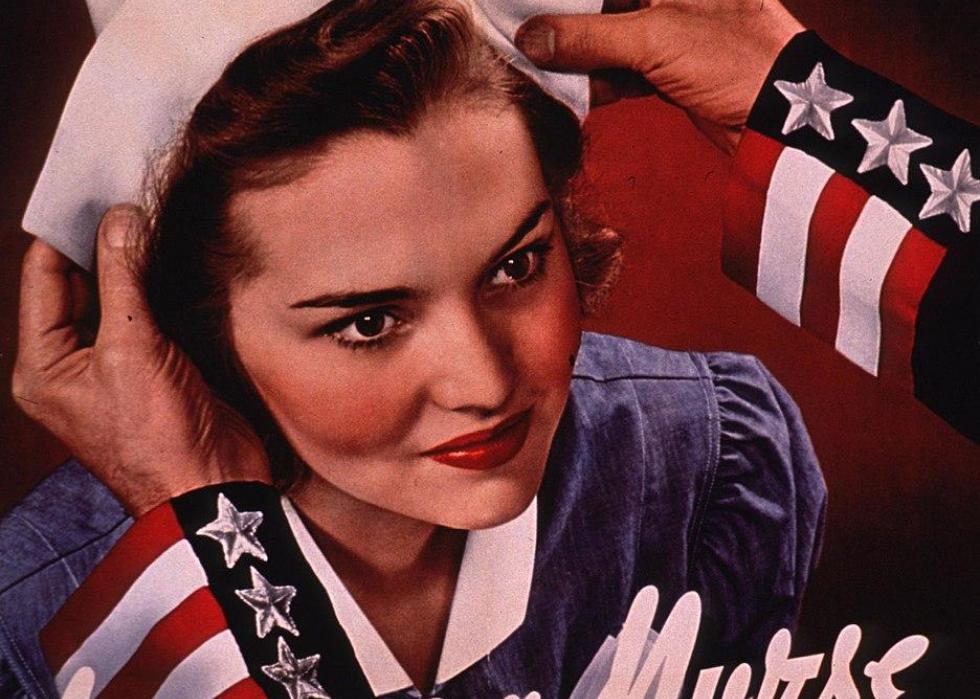
Become a Nurse: Your Country Needs You
The need for military nurses was high during wartime, so women were widely encouraged to take up the profession. This 1942 image of a young American woman receiving a nursing cap intended to beckon all American women to serve their country by helping wounded soldiers.
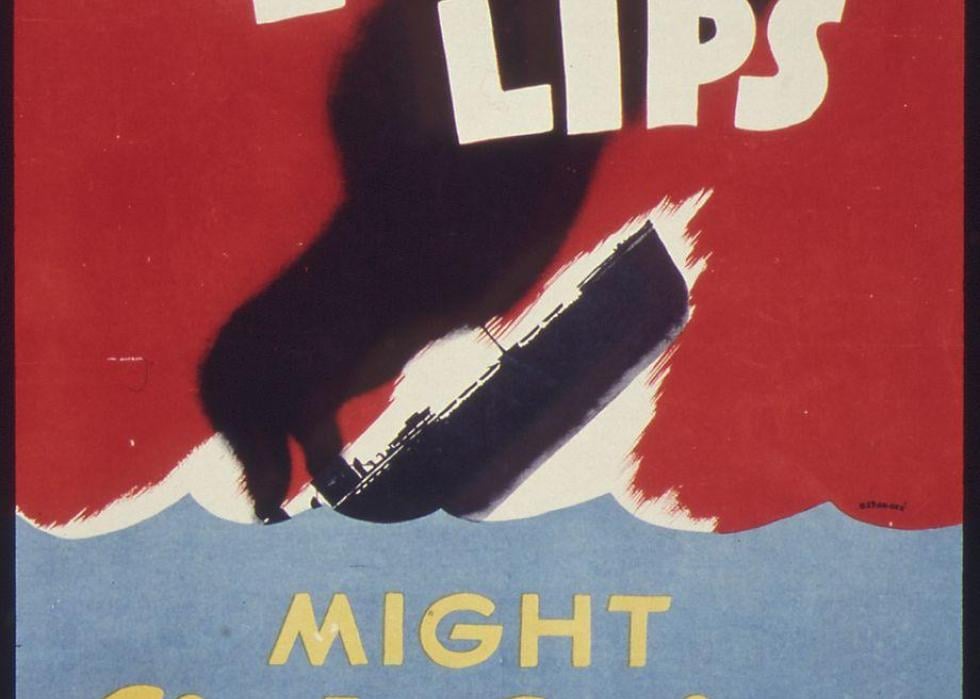
Loose Lips Might Sink Ships
The American War Advertising Council created this phrase during WWII, which took the form of a 1945 poster designed to discourage American citizens from talking about sensitive information that could be leaked to war enemies.
The image of the sinking ship was the most common pictorial accompaniment to the phrase, which was initially produced for the Seagram Distillers Corporation as an aid to the war effort.
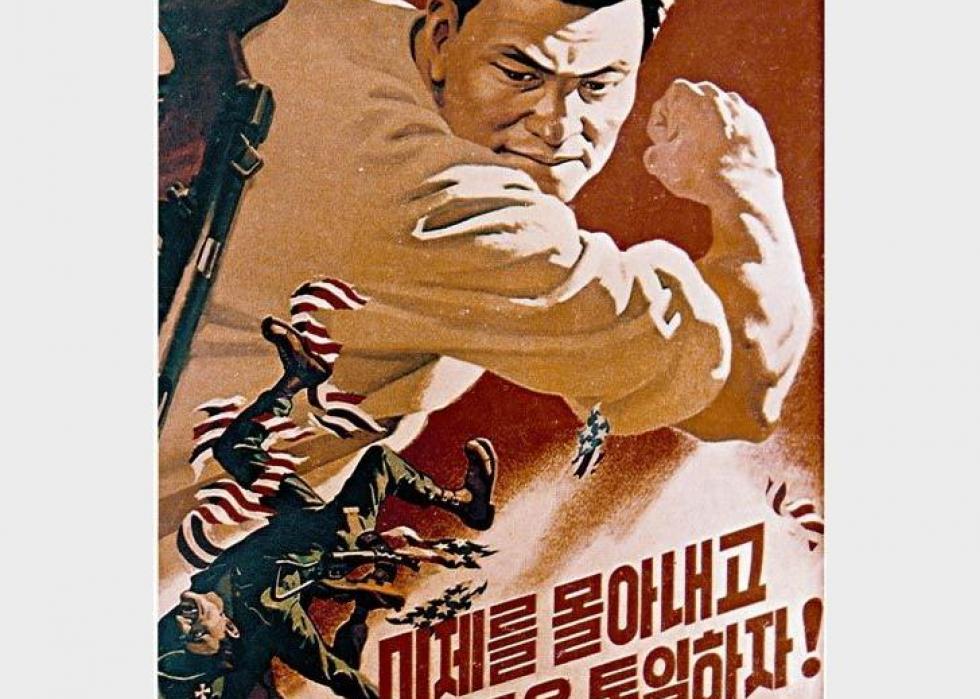
'Kick out the Americans the Unite the Fatherland'
This Korean War-era poster depicts a North Korean soldier literally punching away American soldiers, urging them to pull out of his country.
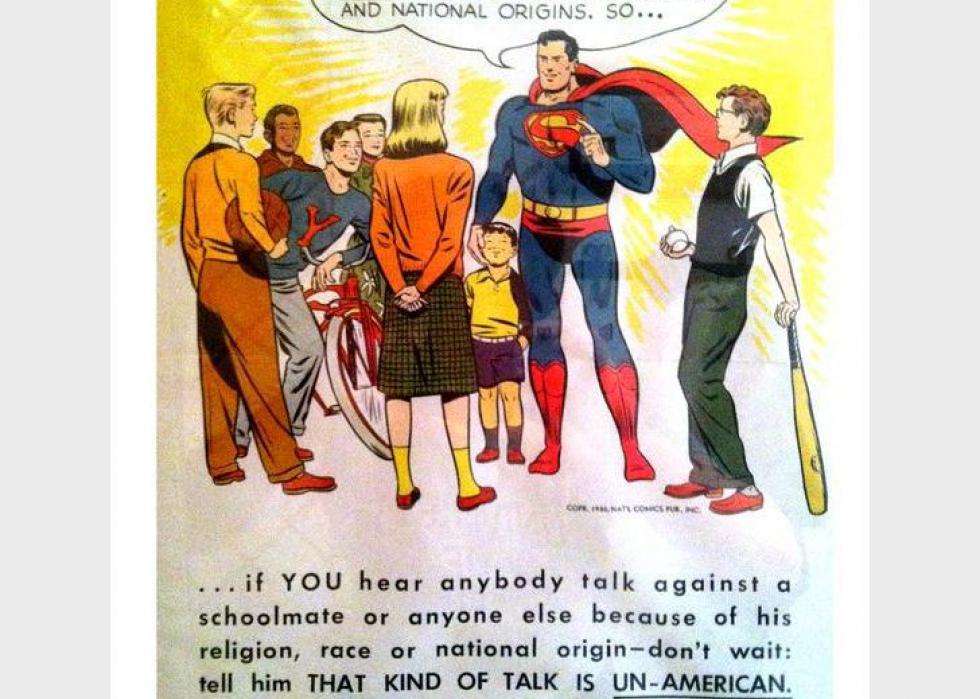
Help Keep Your School All-American
This Superman-centric poster was distributed in the ‘50s by a version of the Anti-Defamation League for the purpose of advocating for racial and religious tolerance. The poster is dated 1956, but a 2008 auction listing on the Hakes Americana & Collectibles website indicated the copyright is from 1949.
It had a small resurgence in the American news a few years ago when Muslims and other minorities were experiencing fairly widespread racism among politicians, corporations and the general public.
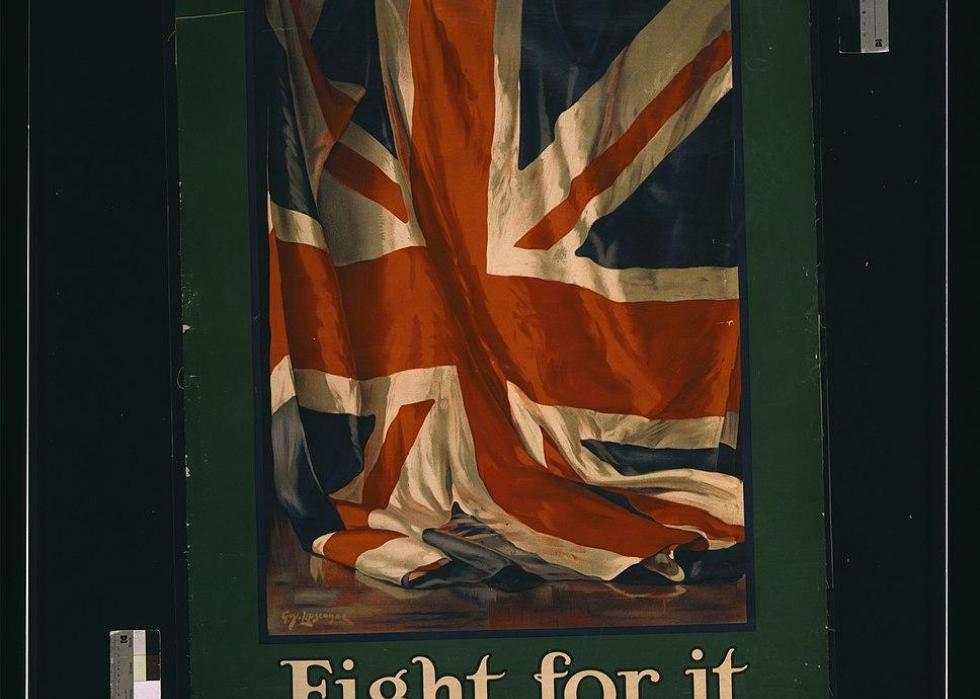
It's Our Flag: Fight for it, Work for it
The British Parliamentary Recruiting Committee produced this poster in 1915. The message is pretty clear—it’s a call for men to join the British army at the start of WWI, using patriotic language in conjunction with the Union Jack.
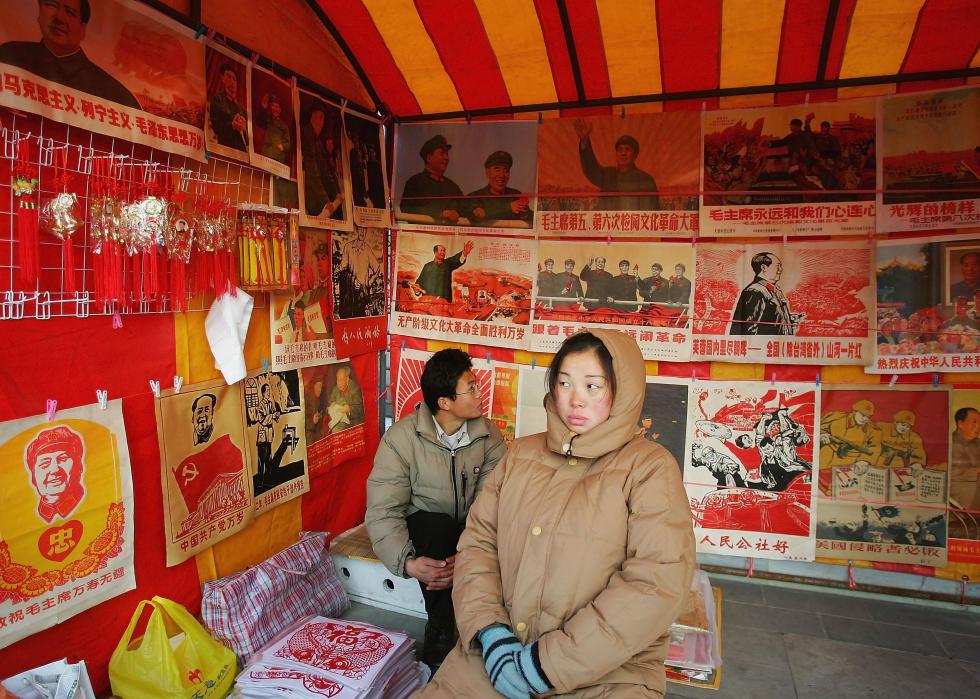
Mao Zedong Cultural Revolution poster
This pro-Mao Zedong poster from the Chinese Cultural Revolution translates to “Long live! Long live Chairman Mao, the reddest and the reddest sun in our hearts!”
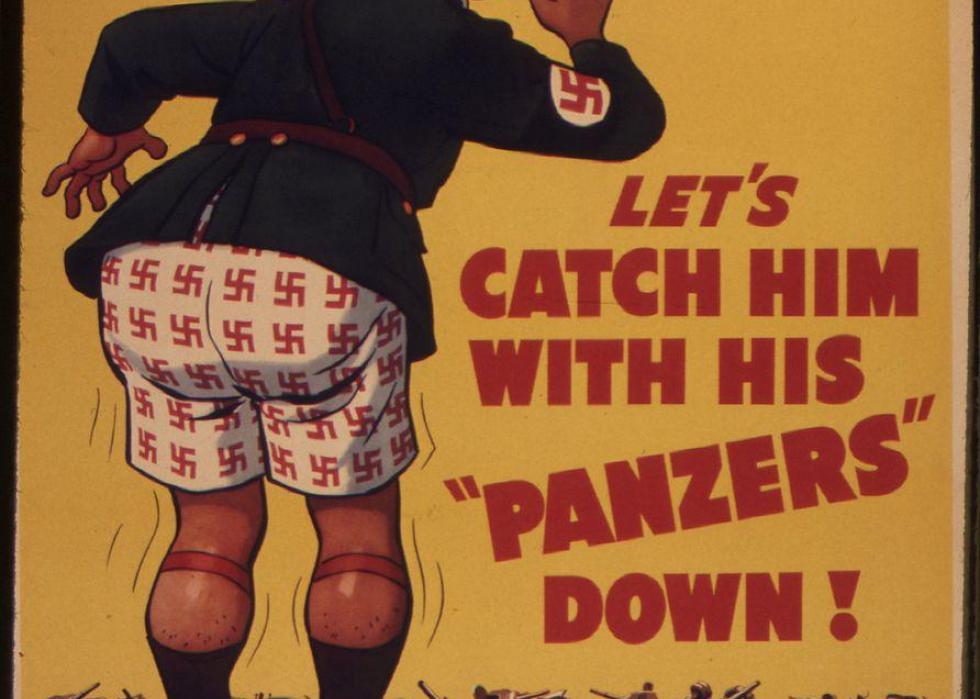
Let's Catch Him with his Panzers Down
Dating back to around 1942, this WWII-era poster depicts a cartoonish version of Hitler in his swastika-print boxers, a literal interpretation of the poster’s slogan. Needless to say, it seeks to inform the American public that the U.S. intends to defeat Germany in the war.
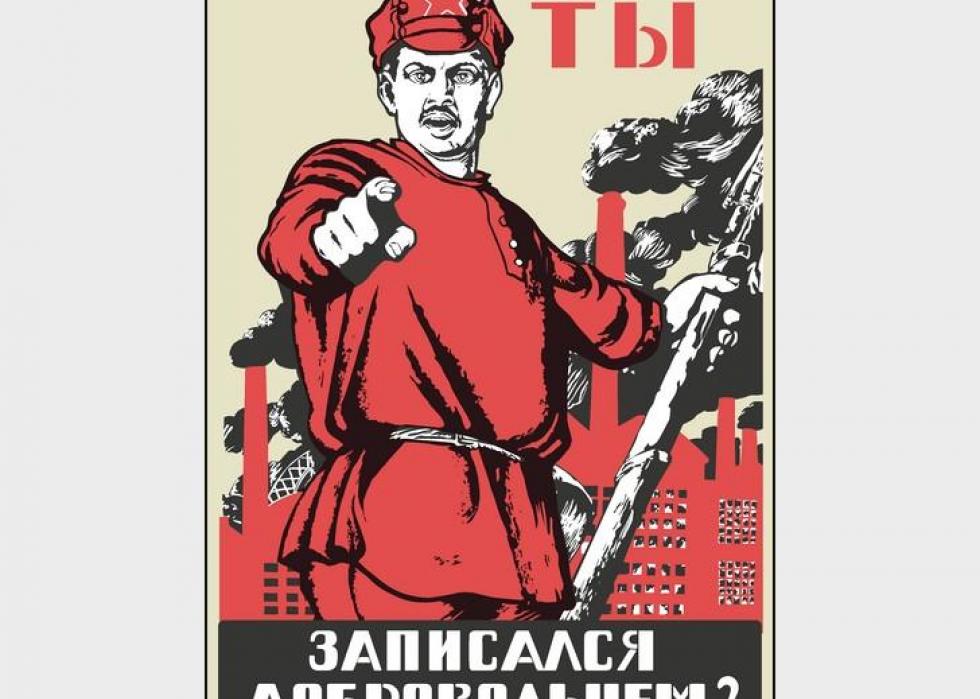
'Did You Volunteer'
This 1920 poster from the Russian Revolution calls for Russian citizens to volunteer for the Red Army, as Lenin had not yet installed a formal military. It is based on the British poster calling for enlistment in the army during WWI.
The artist, Dimitri Moor, incorporated a lot of black and red into his work, and typically used red to connote socialist images like flags.
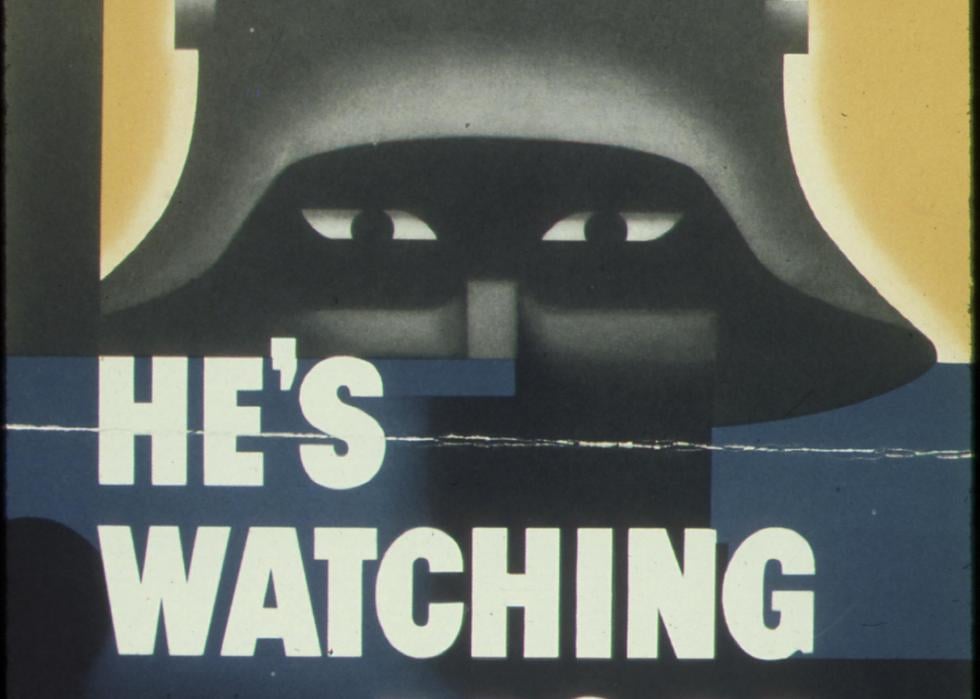
He's Watching You
This 1942 American poster was created to let the public know that the Nazis were watching them. However, some of the public misinterpreted the poster, thinking that the soldier’s helmet symbolized the Liberty Bell. Some factory workers thought that the “he” of the poster represented to be “the boss.”
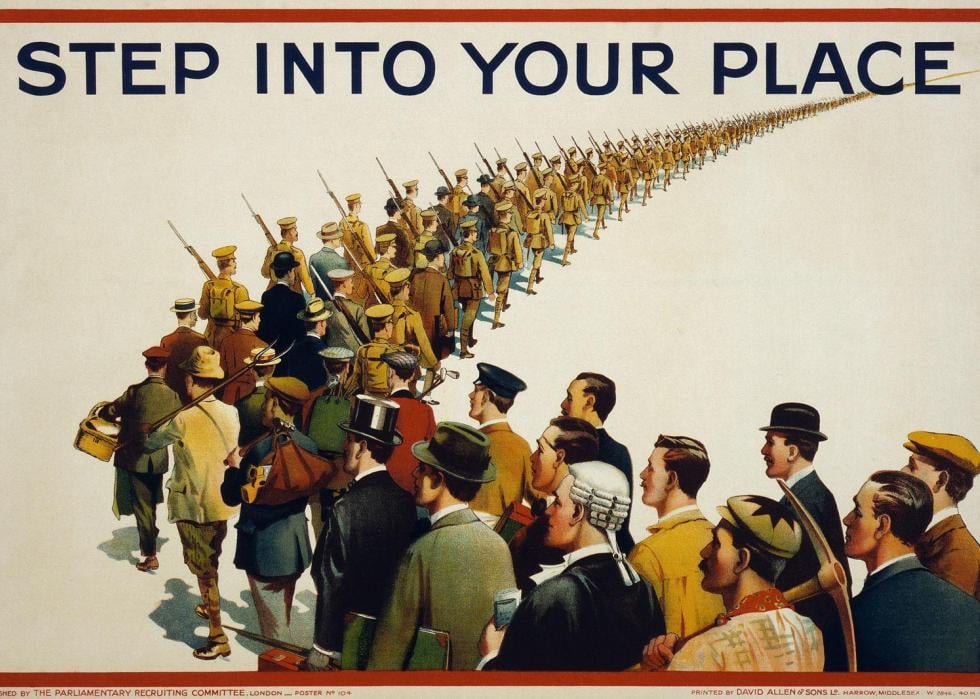
Step into Your Place
The British Parliamentary Recruiting Committee certainly generated a lot of propaganda posters during both world wars. This one from 1915 communicates a clear message—men are strongly encouraged to join the army to serve their country.
Stop Bush
This poster came out in Ireland in 2004 in response to George W. Bush’s move to invade Iraq. It called for a protest attended by Mary Black, Christy Moore, and Damien Rice.
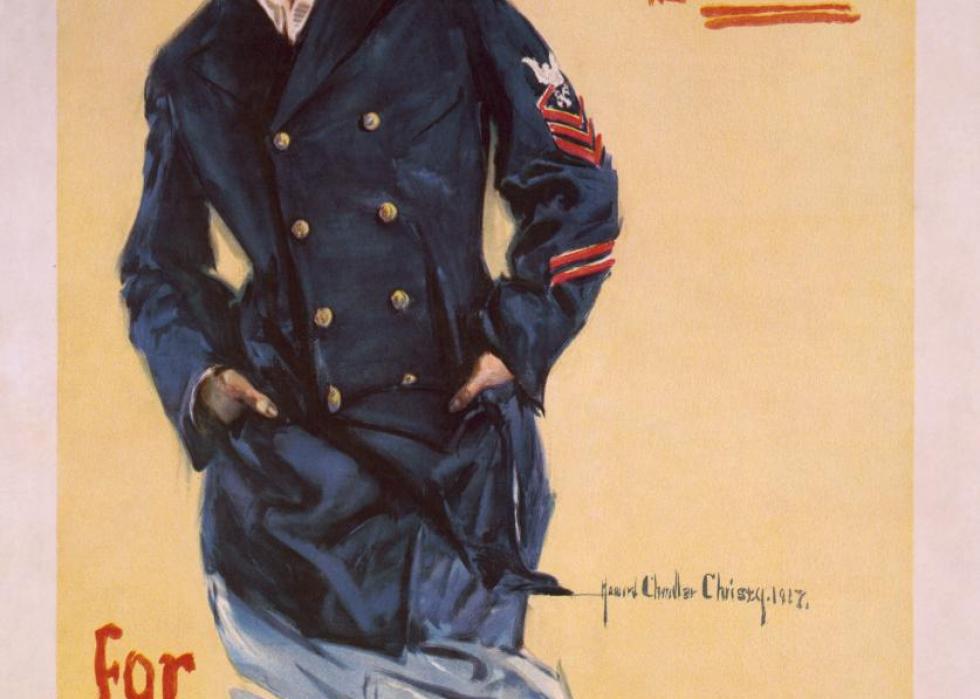
I Want You for the Navy
Just like men, women were needed to serve in the military during the major wars. This WWI poster calls for women to enlist in the U.S. Navy.
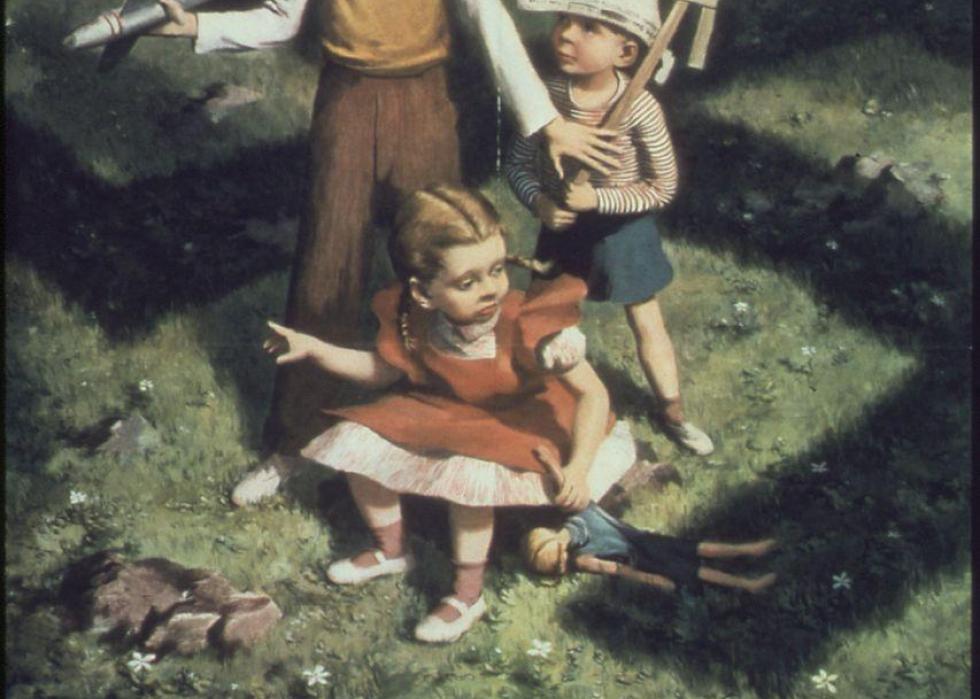
Don't Let that Shadow Touch Them, Buy War Bonds
During World War II, war bonds and war savings stamps provided a source of income for the U.S. government, and Americans were encouraged to purchase them. Buying war bonds also boosted morale among the public.
This 1942 poster was particularly emotionally powerful because it depicts children playing in the path of the Nazi swastika. One of the young boys holds a miniature American flag and the other holds an American fighter plane, further symbols of patriotism.
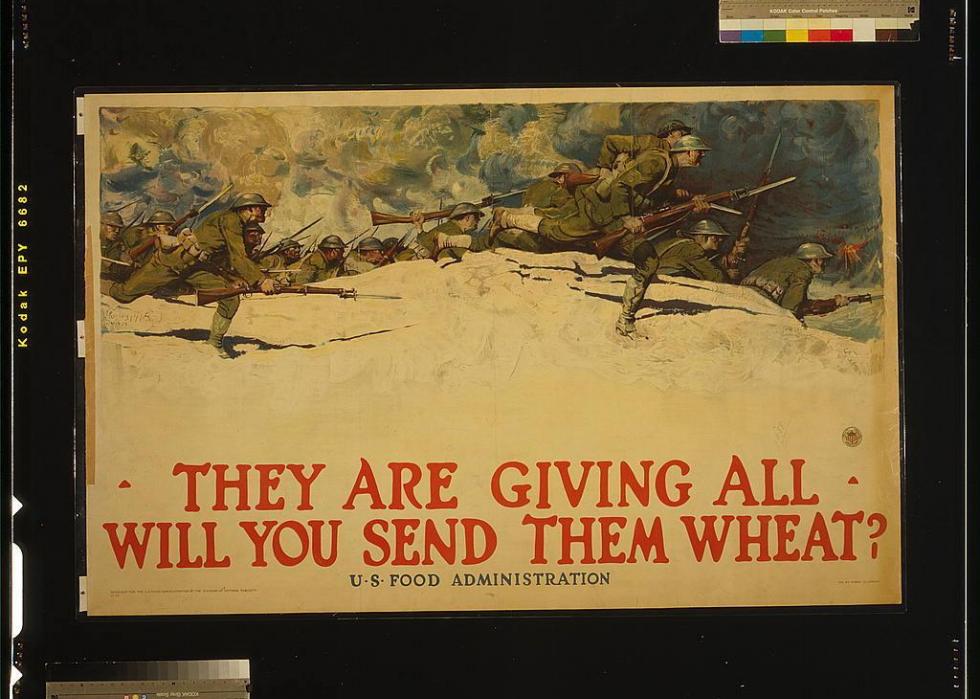
Save the Wheat and Help the Fleet
During WWI, the British public was encouraged to seek out white bread substitutes so the wheat crop could be used to make bread for the soldiers. In America and Britain, much of the public resorted to bread with wheat substitutes, like corn or barley. This was taken so seriously that eating white flour was likened to helping the enemy.
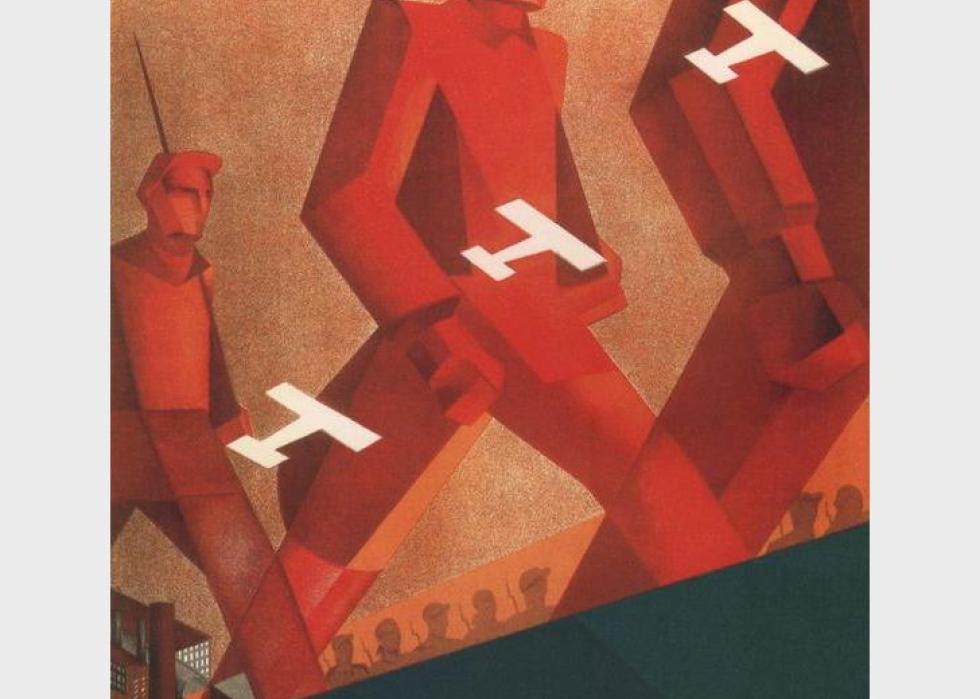
'To Defend USSR'
Valentina Kulagina was one of few female propaganda artists of the 20th century. Translating to “To defend USSR,” this 1930 cubism-esque design depicts the larger-than-life Red Army leaving the factories to fight in the war. The white royalist airplanes flying around them seem not to deter them at all.
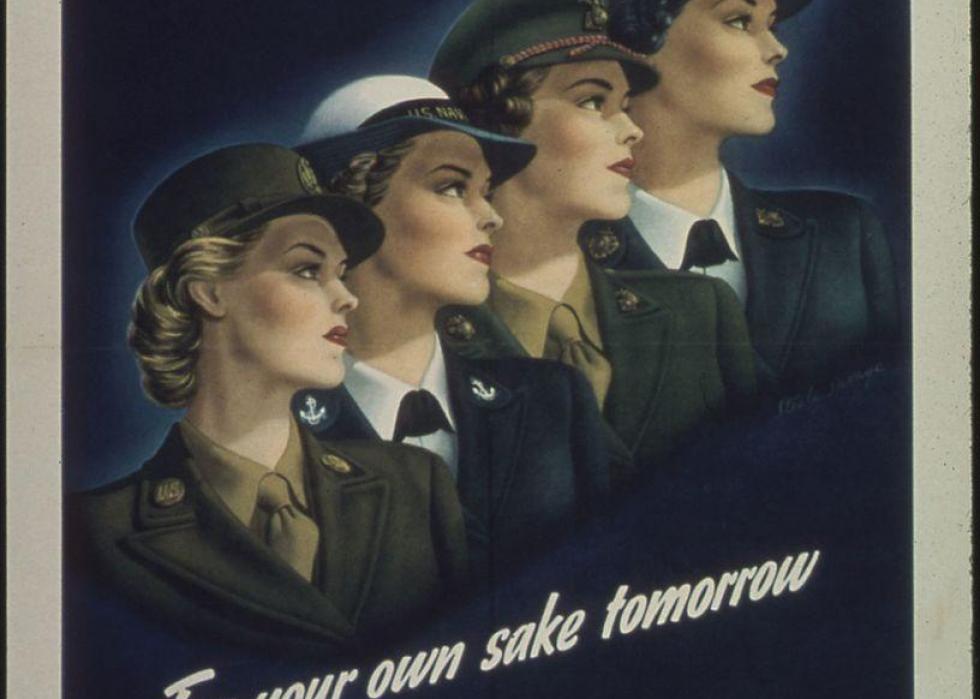
For Your Country's Sake Today, for Your Own Sake Tomorrow
Throughout WWII, American women were strongly encouraged to become involved in the war effort. This poster from the early to mid 1940s shows four women dressed in uniforms of the four armed forces units in which they were able to serve: the Women’s Army Corps, the Navy Women’s Reserve, the Marine Corps Women’s Reserve, and the Coast Guard Women’s Reserve.
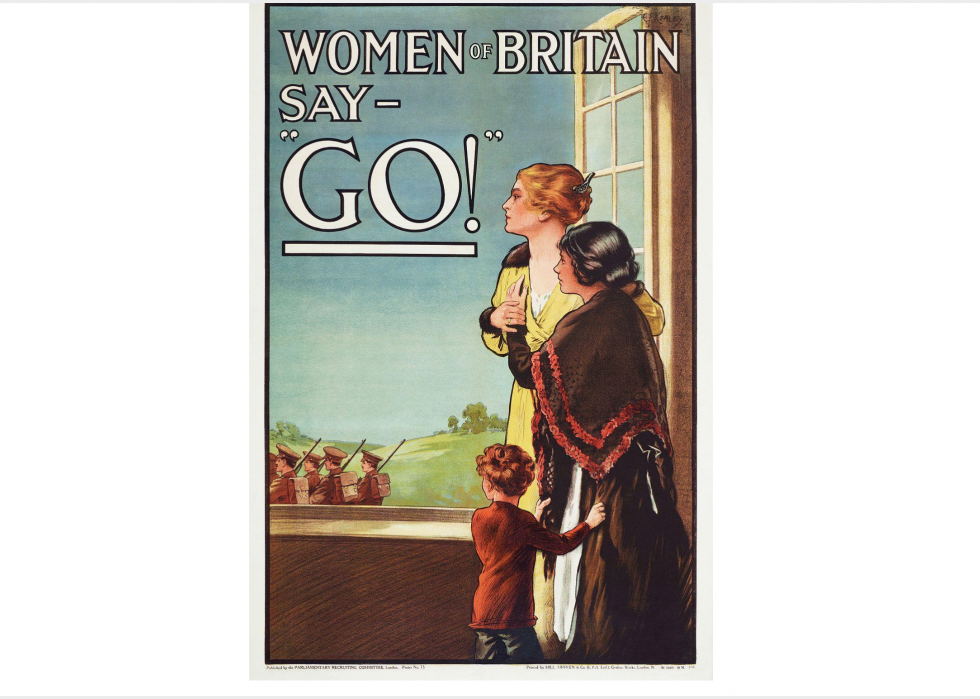
Women of Britain Say—Go
This 1914 poster advocated for British women to contribute to the overall war effort. Women’s traditional roles became blurred during wartime, as they started to work in munitions factories or in various roles at the front.
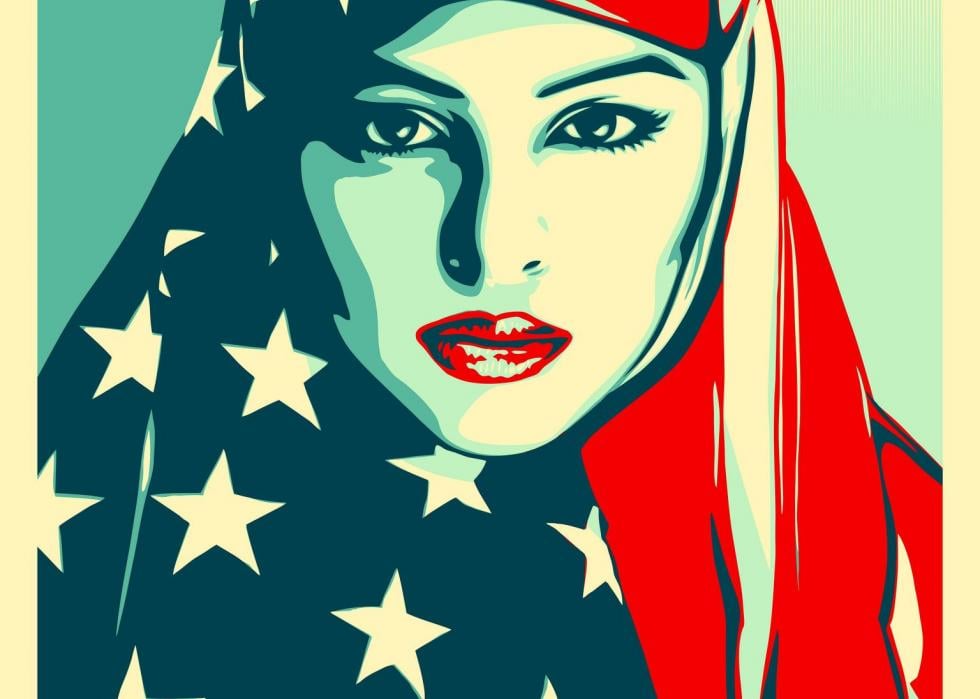
We the People are Greater Than Fear
Shepard Fairey, who created the iconic posters for Obama’s 2008 campaign, also created a set of three posters to coincide with Donald Trump’s 2017 presidential inauguration. This image of a Muslim-American woman wearing a hijab printed with the American flag, in conjunction with the text, represents a powerful message that “We the people” includes individuals of all races and religions. The other two posters in the set feature Latina and African American women with similarly inspiring phrases.
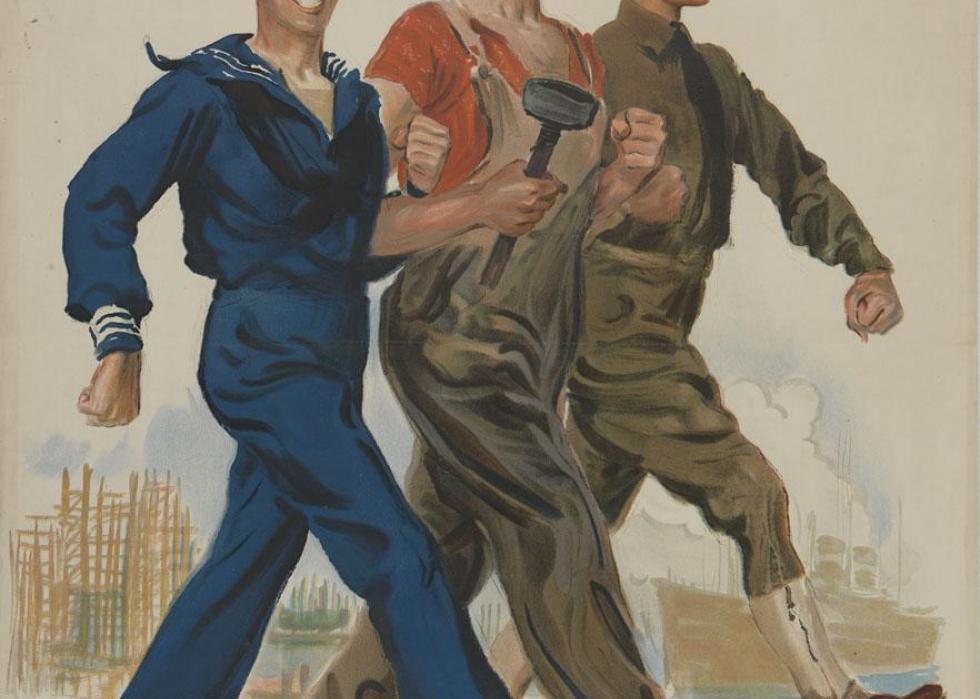
Together We Win
James Montgomery Flagg designed about 46 posters for the U.S. government during WWI. Here’s one from 1917 aimed at instilling patriotism and positivity in the American public. His posters encouraged men to enlist in the Army, women to join the Red Cross, and members of the general public to make sacrifices for the sake of the war effort.
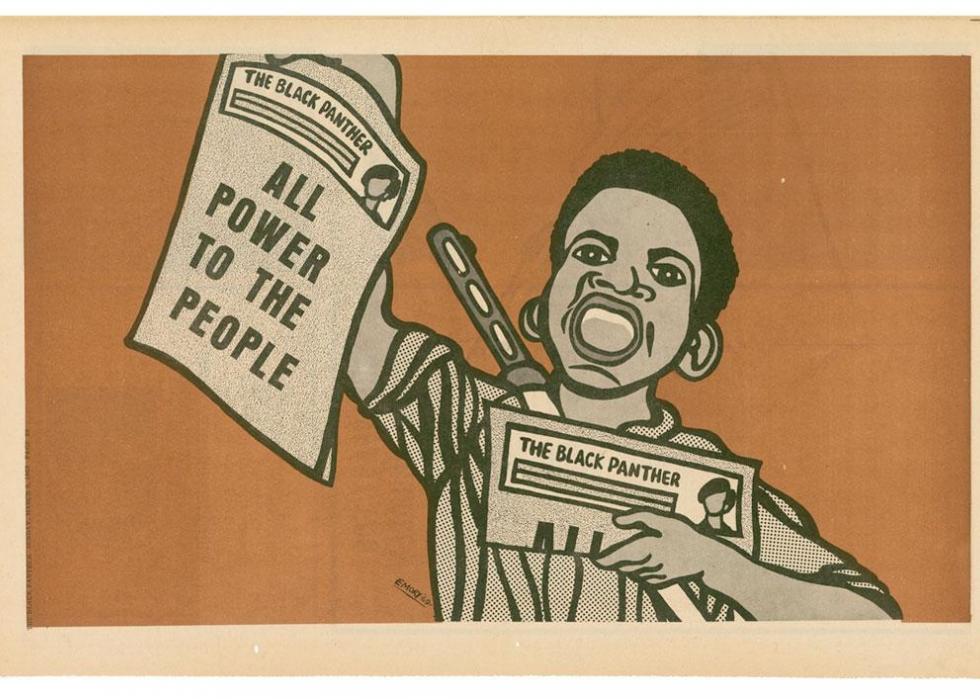
All Power to the People
Douglas Emory, who helped with the layout of the Black Panther newspaper, created this 1970 poster. The party frequently used the slogan “All power to the people.” This phrase also famously accompanied images of the raised fist, which has mainly symbolized African American rights.
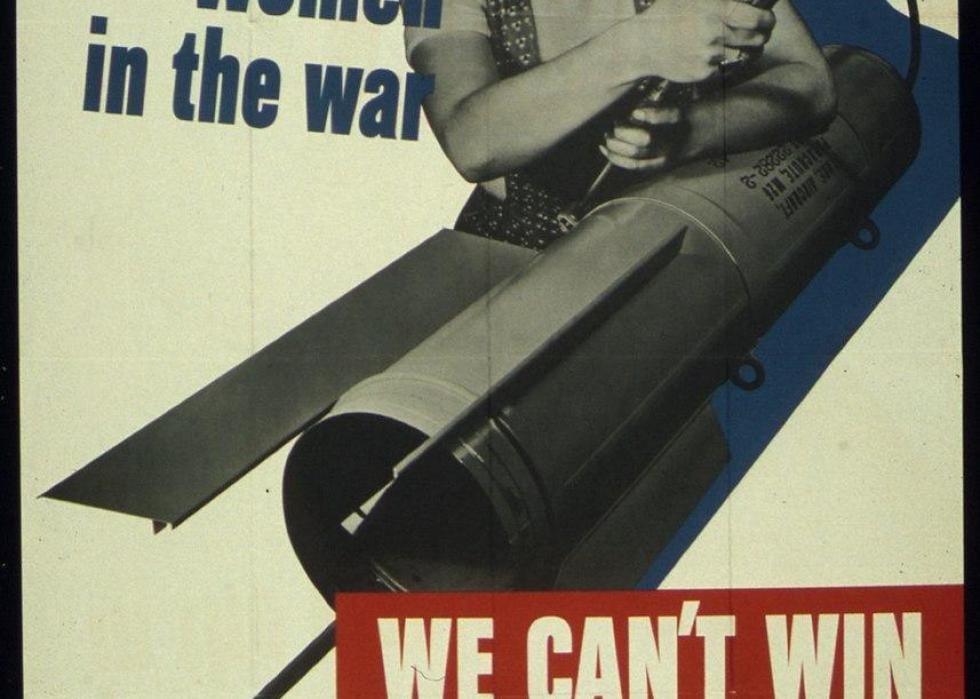
Women in the War: We Can't Win Without Them
Another poster geared toward American women during WWII, this piece dates back to 1942. It bears the image of a female worker riveting a weapon, and calls for women to take up jobs in munitions factories during the war.
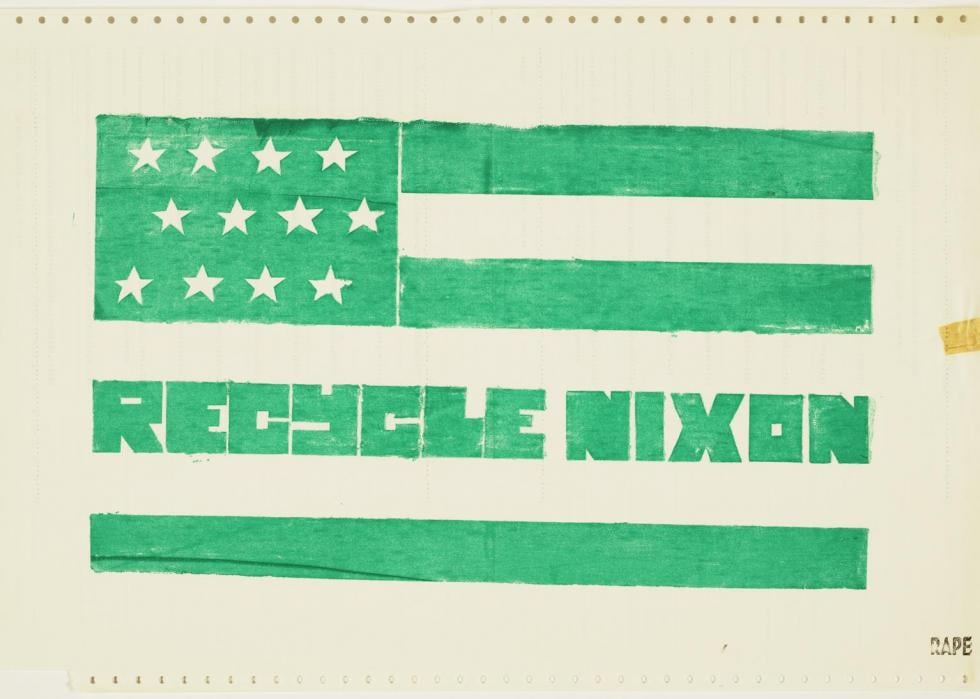
Recycle Nixon
This anti-Nixon poster from the Vietnam War era was made as part of Berkeley’s Political Poster Workshop between 1968 and 1973.
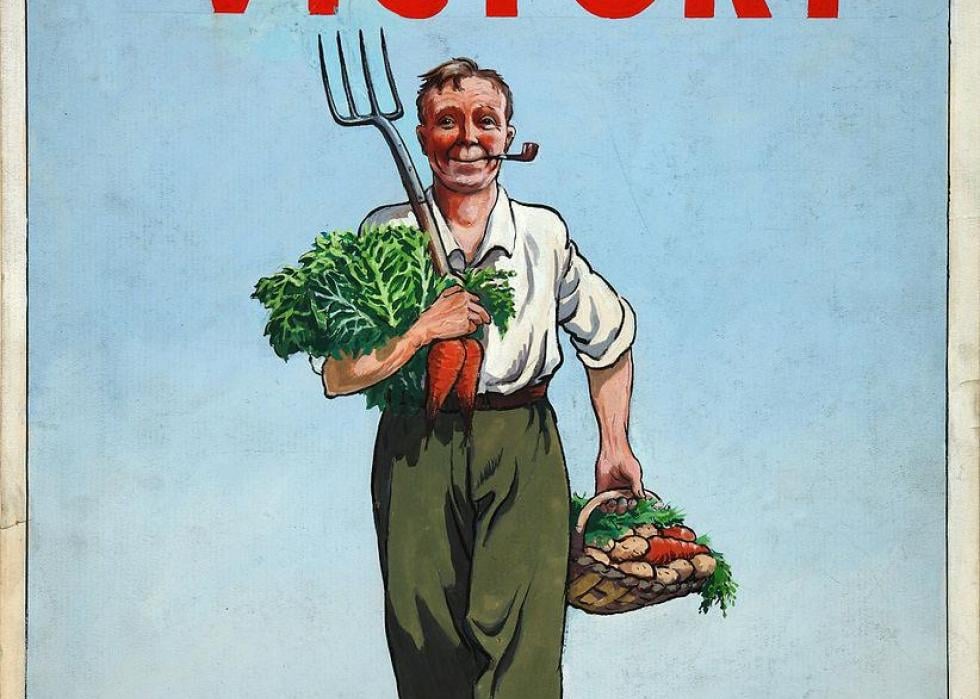
Dig on for victory
Dating back to 1941, this poster was created by the , whose “Dig on for Victory” campaign encouraged citizens to grow their own crops during wartime rationing. Many public spaces, like parks and public gardens, were allotted as vegetable patches during that time.
'Your Father Is in Danger: Register!'
This German poster from WWI translates to “Your father is in danger, register,” and came out shortly after the war ended. It calls for German citizens to join the Garde-Kavallerie-Schutzen-Division, or Horse Guards Rifle Division, one of the post-defeat units that offered military stability after soldiers returned from the war.
Free Labor Will Win
Printed in 1942, this poster of a welder standing in front of an American flag promotes free labor in the U.S.—as opposed to the slave labor used by its fascist enemies.
Girls Say Yes to Boys Who Say No
Folk singer Joan Baez and her sisters Paulien and Mimi are at the heart of this anti-draft poster from 1968. Baez was very active politically in the '60s, and openly encouraged men to avoid the draft at her shows. Larry Gates created the poster to debunk the notion that resisting the draft was unmanly, and to raise money for the Draft Resistance Movement.

If the Cap Fits, Wear It
Like so many other World War propaganda posters, this one from WWII calls for citizens to join the Canadian Army.
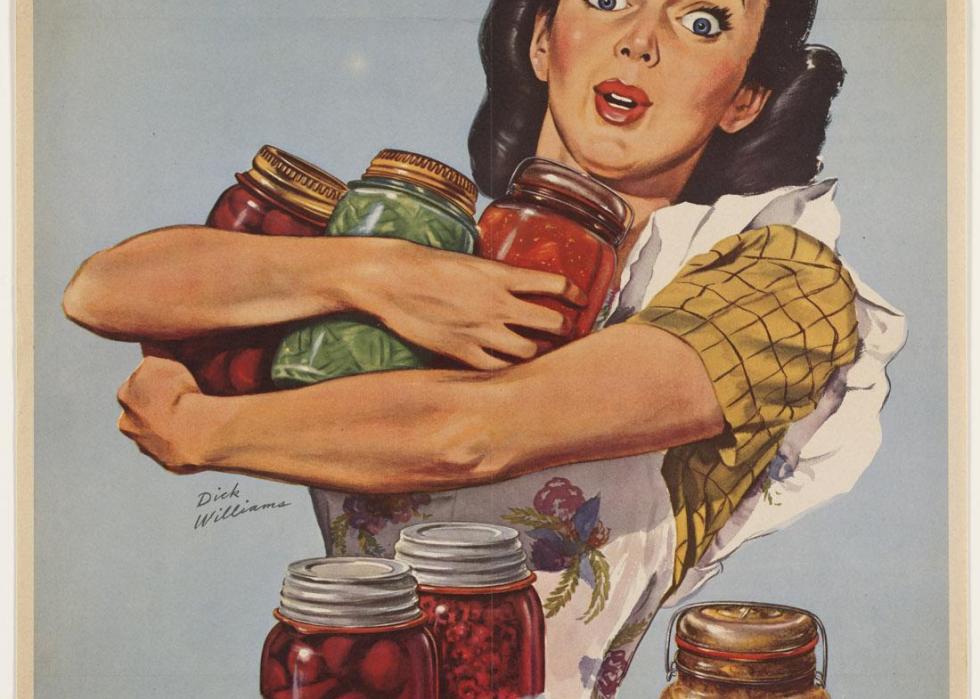
Of Course I Can! I'm patriotic as can be—and ration points don't worry me!
During WWII, the U.S. government initiated rationing of food to ensure soldiers had enough supplies (and that civilians had equal access to scant resources). This 1944 poster serves to remind Americans not to waste food during the war.
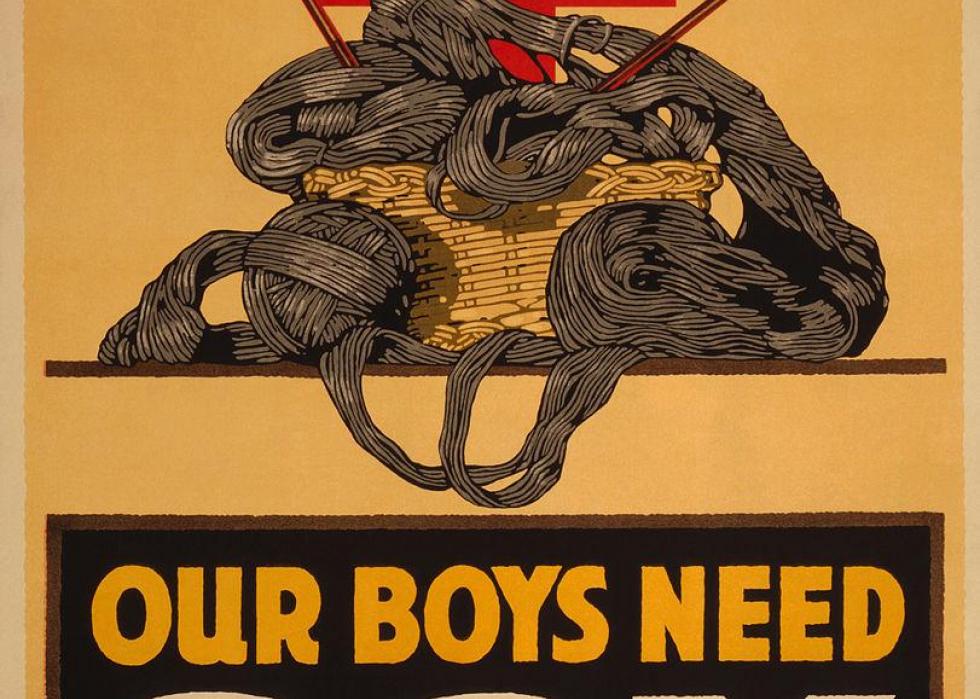
American Red Cross: Our boys need sox, knit your bit
This American Red Cross poster from around 1918 calls for citizens to donate knitted items to U.S. soldiers for when they entered France. Knitters eagerly responded to this call, though they had to adhere to knitting patterns that followed Army and Navy regulations.

Is This Tomorrow? America under Communism
This design serves as the cover of a 1947 comic book written to teach the public about communism’s inflammatory nature. The text on the opening page reads, “Is this Tomorrow is published for one purpose—to make you think! To make you more alert to the menace of Communism.”
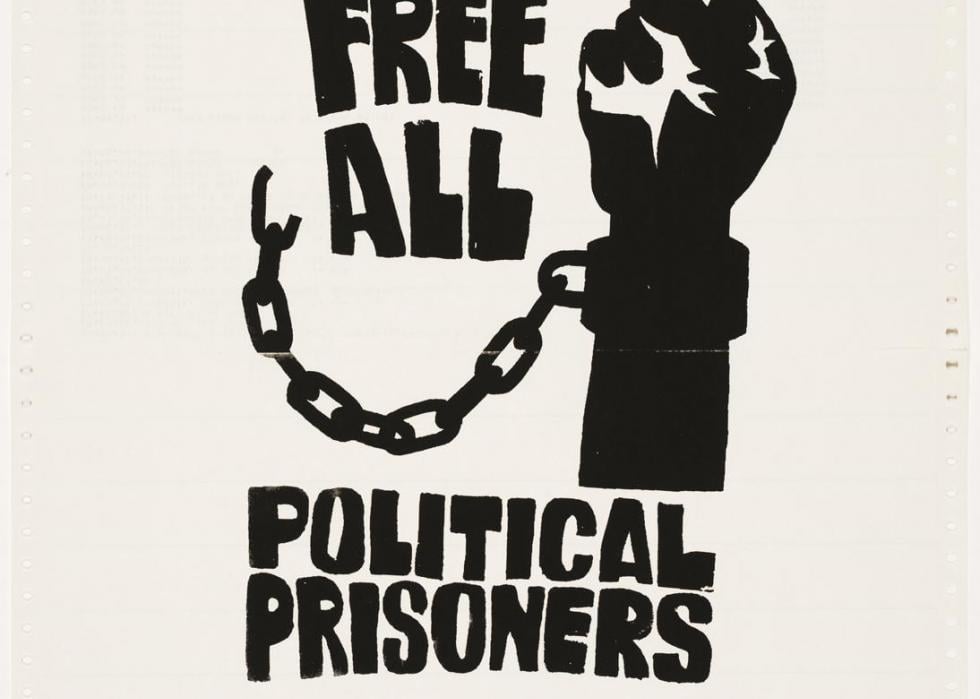
Free All Political Prisoners
This famous image depicting the raised fist with a loose chain is another product of the Political Poster Workshop at Berkeley. It clearly opposes the unjust imprisonment of civil rights activists and other American political martyrs.
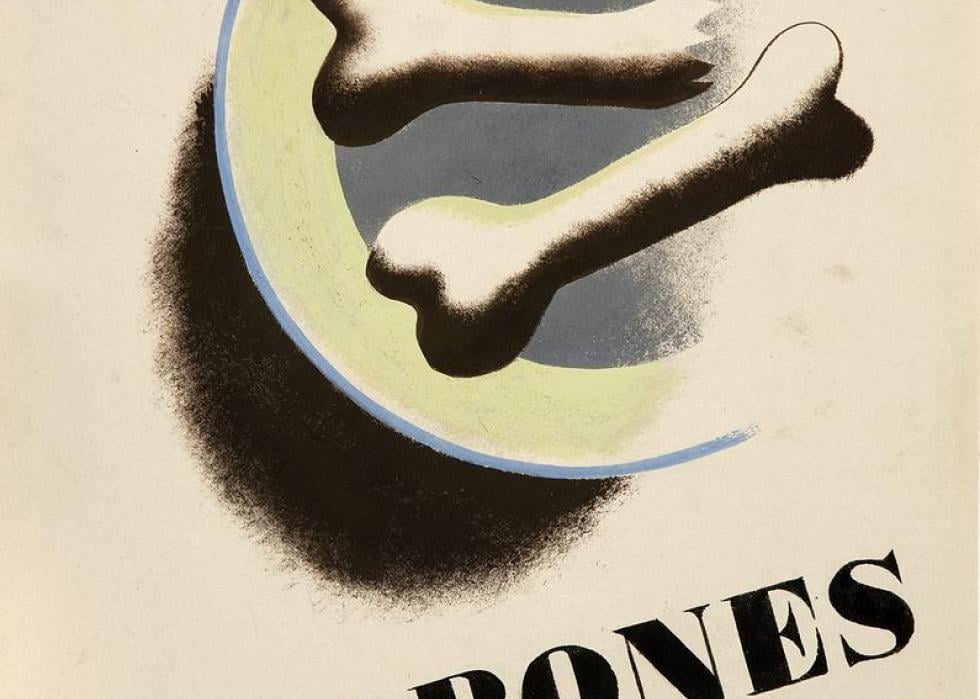
Save Bones for Aircraft Production
Similar to posters urging citizens not to waste food, this WWII poster encourages the British public to save bones and scraps, which could be used in the production of military planes and ammunition.
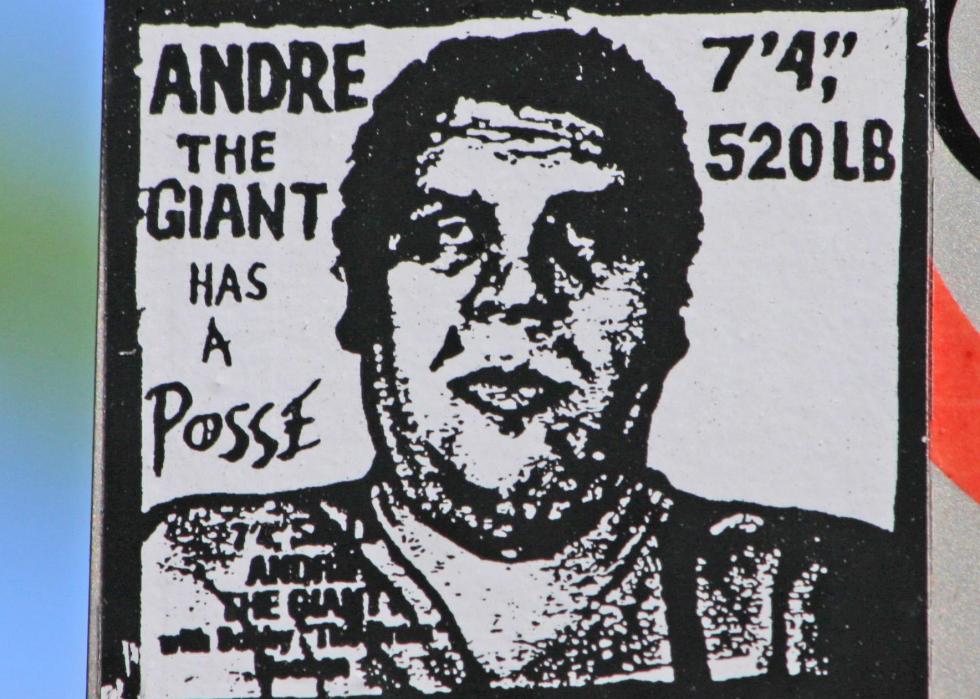
Andre the Giant Has a Posse
Here’s another iconic design by Shepard Fairey, who created the Andre the Giant has a Posse sticker campaign somewhat haphazardly in 1989. It later transformed into simply “Obey the Giant.” While neither design has any inherent meaning, Shepard intended them to be a study in phenomenology, inspiring people to react and question the world around them. Both images have been widely disseminated throughout the world.
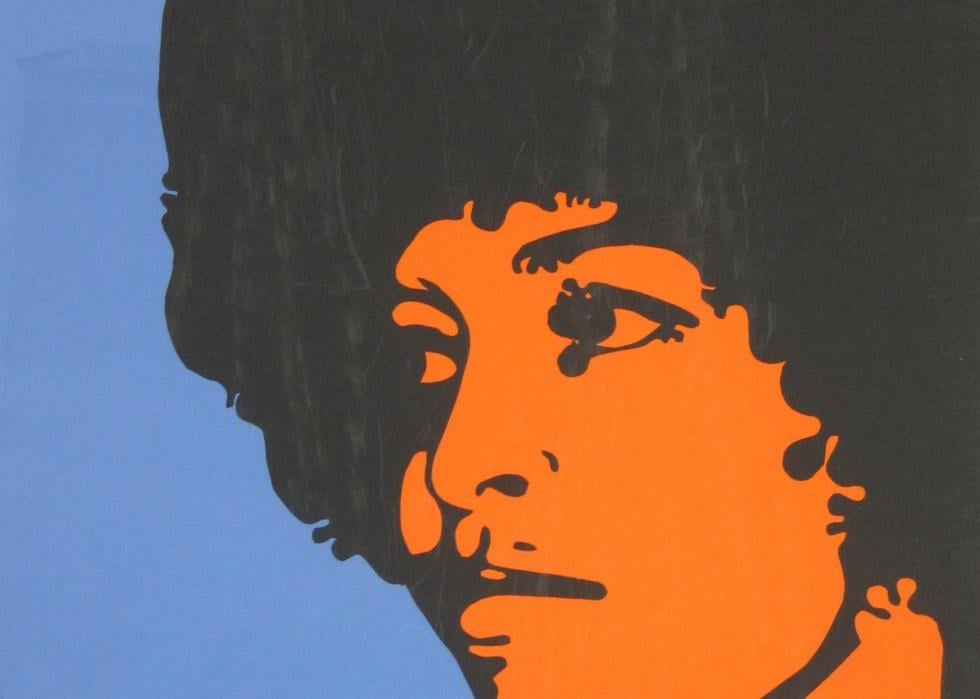
'Freedom for Angela Davis'
Angela Davis was a prominent voice in the late 1960s and early '70s protest movement in America, having actively participated in the Black Panther and Communist parties. This famous poster sprang up when Davis was wanted by the FBI for a crime she did not commit. After her arrest, grassroots organizations started popping up both in America and abroad to fight for her release.
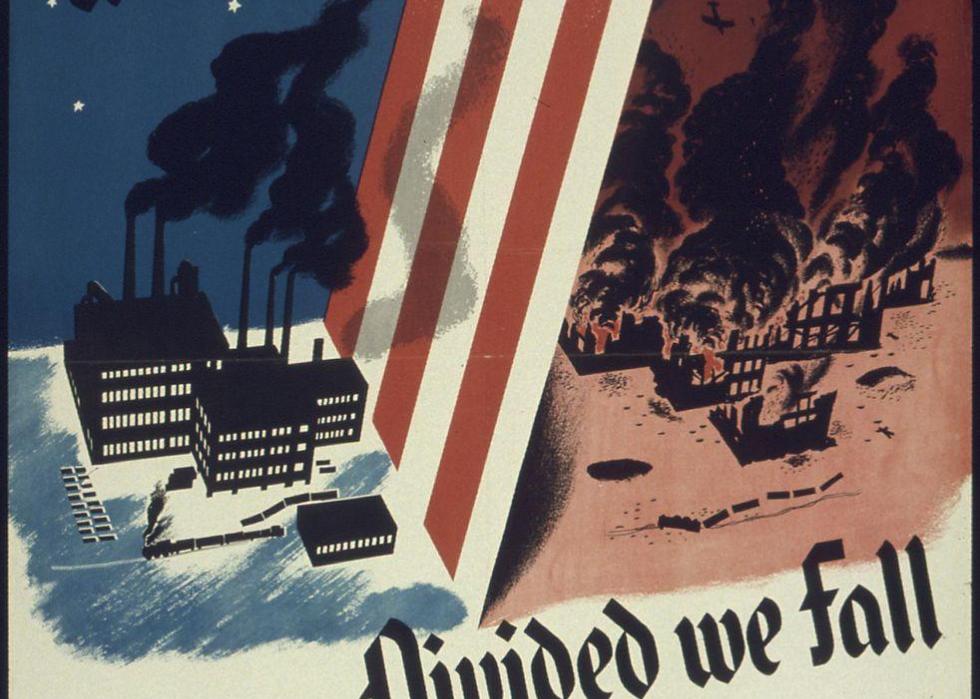
United We Stand Divided We Fall
This famous phrase has roots with the ancient Greeks, but it appeared on this U.S. WWII propaganda poster in 1942. Fundamentally, the phrase denotes the idea that if members of a group with cohesive beliefs work individually instead of as a team, they are destined for failure. This concept certainly applies to the American army’s fight to defeat the Nazis during the war.
